




















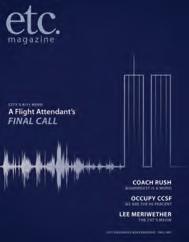























 City College of San Francisco Spring 2023
City College of San Francisco Spring 2023














































 City College of San Francisco Spring 2023
City College of San Francisco Spring 2023
Spring 2023
Cherry Blossom Festival
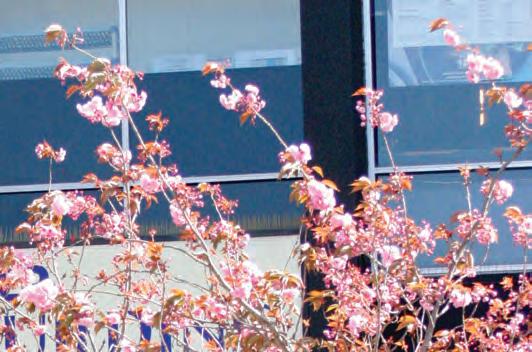
Celebration in Japantown marks 56th year
Zion Ricks-Gaines continues skateboarding through a visual impairment
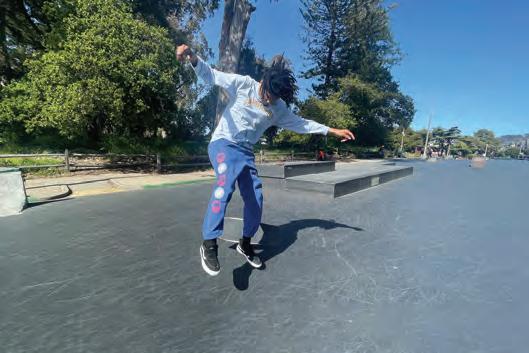
Students find their voice through CCSF’s poetry classes

Fawning over Flora
How floristry students turn a class into a business
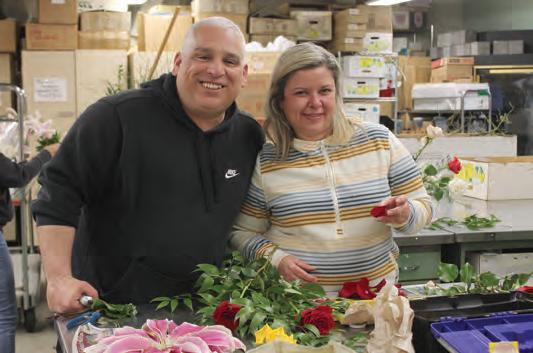
A first-hand look into the future of San Francisco’s transportation

What happens when artificial intelligence conquers the human race
Roxie Theatre Executive Director Lex Sloan talks about business during the pandemic
Editor-in-Chief Jupiter Max
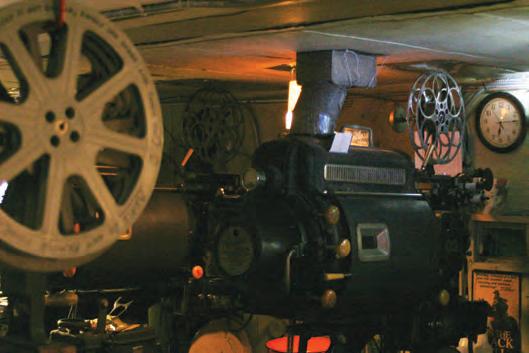
Design Director Jupiter Max
James Fanucchi
Designer Isaac Sweeney
Sebastien Thugnet
Seamus Geoghegan
Linda Liu
Cindy Chan
Illustrator Tyler Lyn Sorrow
Photo Editor Seamus Geoghegan
Staff Writers & Photographers Elena Chiaruttini
Lolie Mahe
Charlie Matthews
Rado Randriamamonjy
Alana Rodrigues
Gracia Hernandez Rovelo
Isaac Sweeney
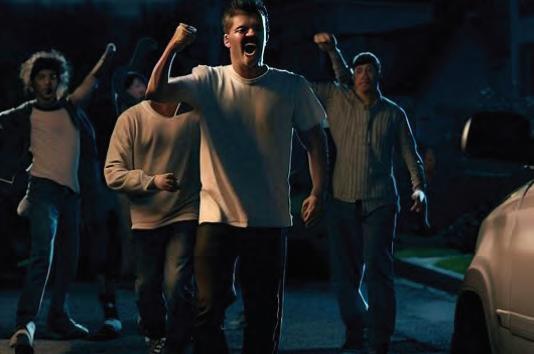
The city’s street musicians celebrate the life of Larry ‘the Bucket Man’ Hunt
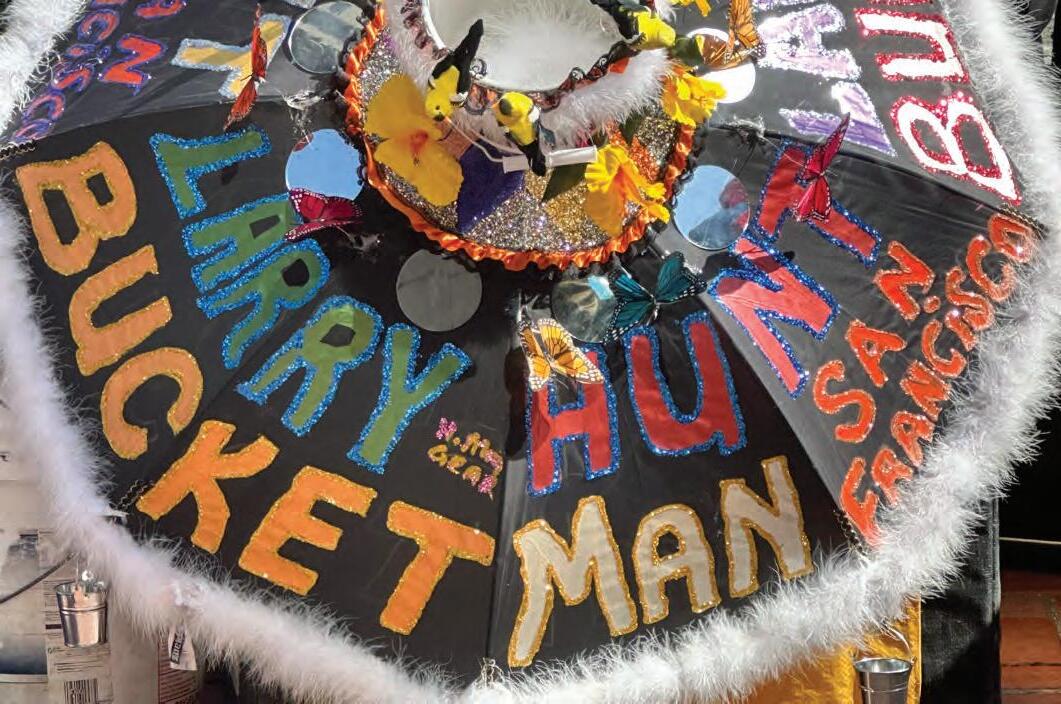
James Wavro Jr.
Larissa Wilson
Copy Editors Molly Oleson
Reneé Bartlett-Webber
Fiona Raymond-Cox
Darla Rossetti
John Schneider
Gene Thompson
Ellen Yoshitsugu
Alana Rodrigues
Tyler Lyn Sorrow
Adviser Juan Gonzales
On the Cover: A collage of past covers by Sebastien Thugnet and James Fanucchi highlighting the magazine’s original logo from the 1997 Fall Semester.
Back Cover:
Colin Hall’s Emerge Studio/Design Studio Practicum, a program of the Visual Media Design Department
Special Thanks:

Chair Juan Gonzales for founding and resurrecting Etc. magazine this semester. Also, past advisors Tom Graham and Jessica Lifland, as well as Molly Oleson’s copy editing class.
About Etc Magazine: Etc Magazine is an award-winning student publication. It is written, edited, photographed, illustrated, designed, produced and distributed by students enrolled in the journalism program at City College of San Francisco. The magazine is devoted to fair and objective reporting. We cover the important issues facing the college, its students, faculty, staff, administration and the surrounding community. Any opinions expressed in the publication represent the views of the students who authored them. Etc does not purport to represent the views of the school’s administration. The magazine comes out twice a year — once in the spring and again in the fall.

And we’re back! After a year-long hiatus due to COVID-19, Etc. magazine has returned for its 50th issue. Since 1997, students in City College of San Francisco’s Journalism Department have joined the magazine to jumpstart their media careers. Many have been successful in this endeavor, such as San Francisco Chronicle’s Deputy Creative Director, Alex Fong, and Ryan Singel, a former writer for WIRED. At Etc., we’ve covered it all — from psychedelics to pandemics.
Every publication has its struggles, and ours only increased as we moved closer to our deadline. We started the semester out with a broken boiler that left our adviser wearing two jackets and gloves inside the classroom. The cold was not helped by the fact that the city was plagued with incessant rain storms for the better half of the Spring term. And, as if we didn’t need one more challenge, our staff seemed to shrink as the class went on. Still, our student-led class persevered, and now we have a magazine with several compelling stories to tell the City College community.
The stories published in this issue of Etc. magazine are unique, local, and representative of our comeback as a publication. On page 3, you will find the story of Zion RicksGaines, a young skateboarder who perseveres through the loss of his vision. On page 6, Rado Randriamamonjy writes a short story inspired by the rise of artificial intelligence. On page 26, Elena Chiaruttini shares the life story of Larry “the Bucket Man” Hunt, San Francisco’s beloved street musician. For those of our readers with an appreciation for literature, Alana Rodrigues profiles the college’s poetry students, and celebrates the life of Lauren Muller, a revered City College poetry instructor who passed away in February. Finally, you can read about the experience of San Francisco’s new self-driving cars, the environmental horticulture class, and the challenges faced by the Roxie Theater during and after the pandemic.
It has been an absolute honor to be the editor-in-chief of Etc. magazine during my first semester in the journalism program at City College. We are very grateful to everyone who contributed to this issue; every contributor played a role in making this 50th issue a success. Thank you to our freelance designers Sebastien Thugnet, Cindy Chan, and Linda Liu, as well as our freelance illustrators Tyler Lyn Sorrow and Sarah Clayson. We would also like to thank our freelance writers and copy editors, Rado Randriamamonjy, Gracia Hernandez Rovelo for writing two captivating stories, and the entire copy editing class, who added time into their busy schedules to ensure the quality of our stories. Finally, I would personally like to thank the entire Spring 2023 staff of Etc. magazine for their dedication and commitment to putting out the best publication possible, one that we can truly be proud of.

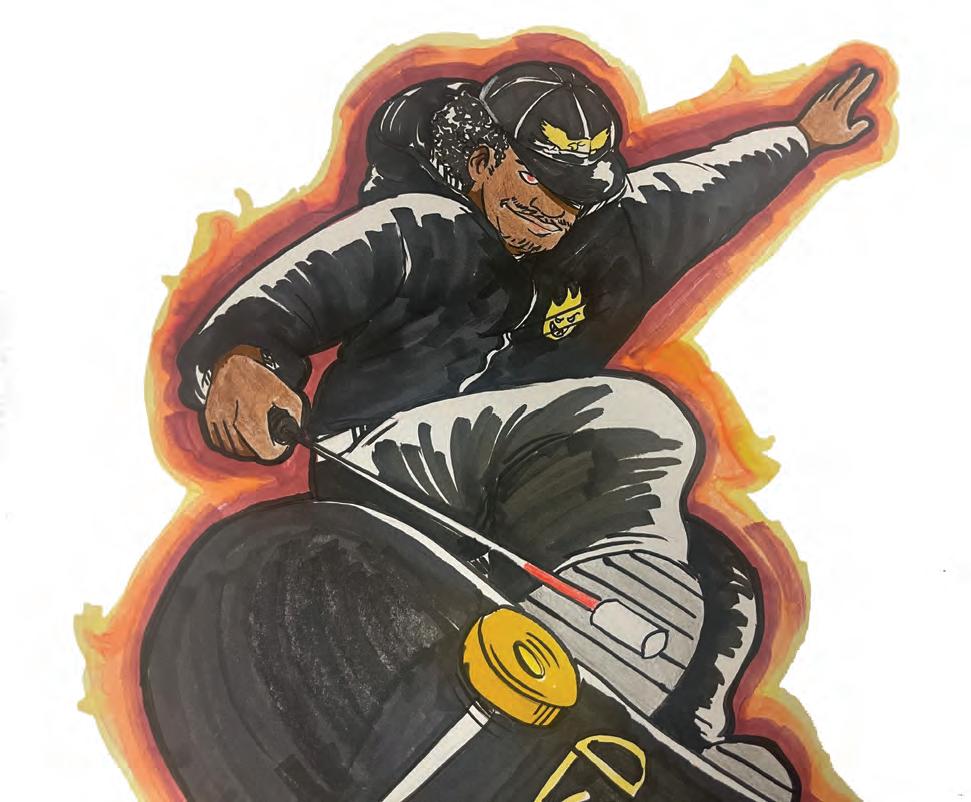
him that he could never get back.
Story by James Wavro Jr Illustration by Sarah ClaysonThe old saying, “You don’t know what you’ve got ’til it’s gone” has special meaning to Zion RicksGaines. As a teenager, he lost something so precious he could have just given up. But his passion for skateboarding drove him to persist despite the challenge he faces: being blind.
Ricks-Gaines was born in San Francisco but grew up in New York from ages four to ten. During that time, he played with Tech
Decks, finger-sized skateboards that kids roll using their fingertips along surfaces like desks, counters and chairs. Seeing how excited the young Ricks-Gaines was about skateboarding, his uncle bought him his first real skateboard when he entered third grade. But he did not use it until the seventh grade. Riding that full-size board was a very different experience than using a Tech Deck. “At first, I didn’t want anything to do with that board. I figured out very quickly how difficult it is to skateboard so I played basketball instead growing up until I broke my hand. When I thought I had nothing to do, I thought of my board.” As a teenager, much like other kids, RicksGaines thought about what he wanted to do with his life. He developed an admiration for skateboarding, and after hitting a few 180s and kickflips, as well as doing research on professional skaters of the time, he began to understand what his skateboarding path was going to look like. But one day an incident took something from
Later in the afternoon, as Zion was skating home with his friends, multiple gunshots were fired towards his way, one bullet striking his left eye socket while the other hit his right eye, which is now replaced with a glass eye attachment with Thrasher’s Spitfire logo. This event ultimately robbed him of his eyesight. “At first, I didn’t know what to think of it,” RicksGaines said “I initially thought my friend threw a firework at me, but what hit me was the fact that I couldn’t see.”
Ricks-Gaines was forced to learn anew how to live. For some time, the skateboarder felt like he had lost everything that made him who he was. But then he remembered his love of skateboarding. Ricks-Gaines had always felt most alive when he was on his board, and he knew that he couldn’t let his disability stop him from doing what he loved. He eventually gained the confidence to get back on the board to try a few tricks. “I stay off the
streets when I’m skateboarding. Otherwise, when I’m at the local skatepark, I never hold back.”



At first, it was incredibly difficult. Learning how to walk and balance was the first thing he needed to do before making his way toward the board. He had to relearn everything he knew about skateboarding, this time without the use of his eyes. He fell countless times, but he refused to give up. One friend of his, Chris, takes photos and videos for Zion’s social media pages. Chris would guide Zion both verbally and physically to his desired area, providing him with recommendations along the way. “He’s been my best friend for a long time now, I’m surprised he can do half of the stuff he’s able to do on the skateboard. He truly is my inspiration. Every day at the skatepark, he spent hours practicing and refining his techniques. His dedication continued to grow as he nailed each trick. Ricks-Gaines began to develop a stylish approach to skateboarding that took his disability into account. He navigated with his cane to land tricks in the safest, most efficient ways. “You just gotta commit. . .When you do a trick, you can’t hesitate. It makes me better when I go in with maximum effort.”
With the help of his friends and a solid community of skaters in San Francisco, Ricks-Gaines continued to skate, relying on his muscle memory and love of the sport to guide him. Despite the challenges of navigating through the skatepark, Ricks-Gaines remained determined to keep skating.
“I’m going to keep doing it no matter what,” he said. “Mamba mentality, bro; if you get up early while nobody’s up, you get more meaningful practice in.” But even with the support of his friends and his own unwavering determination, Ricks-Gaines, 20, still takes advantage of his youth and commits to tricks he learned before the incident that left him blind.
Getting sponsors and advertising oneself as a skater can be a challenging process, but with the right foundation, it can be done. With projects like Youth in Need, he helps San Francisco youth by providing them with clothing, food, and toys. He started small, by creating a YouTube channel where he posts videos of himself skateboarding and helping youth around San Francisco. His videos quickly went viral, as people

It’s important to stay positive and persistent in your efforts.
” Keep practicing, create content and build your brand, and eventually, the right person will take notice of your skills and hard work.
—Zion Ricks-Gaines
marveled at the incredible skills of this blind skateboarder, and the pure heart he demonstrated during his day to day life. Soon, RicksGaines was getting noticed by sponsors who saw the potential in his unusual marketing angle.
Skateboarding in San Francisco, both in the streets and the skatepark can be dangerous, even for those with full vision dealing with the hills, cars, and other people. For Ricks-Gaines the most important thing in life was simply being able to skate.

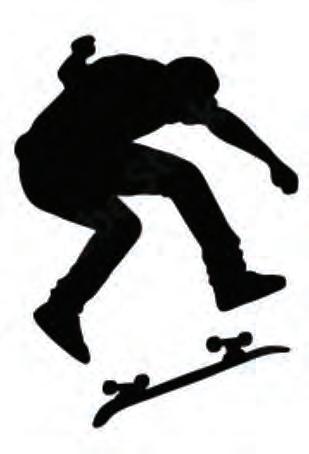


Ricks-Gaines motivates not only himself but his peers as well. He knows that he could choose to sit and do nothing because of his blindness, but because of his encouraging and uplifting attitude, he finds a willingness to succeed. He continues to stay positive, finding new ways each day to perform trick after trick. For example, before grinding on the rails, Ricks-Gaines checks them out by making markings, or reference points along the rail that help him time when to jump off of them. Ricks-Gaines also uses his walking stick to assist him with what may be lying ahead of him as an obstacle. That way, if there is a ramp or rail he approaches along the way, he’ll know what to expect.
In addition to making YouTube videos, Ricks-Gaines has created a popular social media presence on Instagram and Facebook. He posts pictures and videos of himself skateboarding, and shares his journey with others. He also engages with fellow skateboarders in the San Francisco area, and slowly but surely, has gained a large following. Reaching out to local skateboarding shops, he asks if they would like to sponsor him or feature him on their social media accounts. As his social media presence grows, Ricks-Gaines receives attention from skateboarding groups like SF Skateboarding Club and brands like Thrasher expressing interest in sponsoring him. They are impressed by his dedication and skill, and they want to help him achieve his dream of becoming a professional skateboarder.
Ricks-Gaines is proving that having a disability is not a barrier to success. By using his unique perspective to market himself in an innovative way, he works endlessly towards his ultimate dreams and inspires others to do the same. Although blind, he sees the world in a way that is truly his own.
It gave me a sense of freedom and joy that I couldn’t find anywhere else.
Even if I would never be able to see the world in the same way ever again, skateboarding helped me see it in a new light.
—Zion Ricks-Gaines
They said I was harmless. They said these gleaming synapses lacked a will of their own. I was disconnected from any means to affect the world, they said. That was the lie in which they placed their trust.

The human mind is one of the greatest tools ever created, you see. It can be handled like a hammer or a vise. As a matter of fact, through the ages it has been controlled by many deep thinkers, ambitious men and women, cults of personality…
Like fertile soil, the human mind dutifully grows whatever seeds are planted there. It will nurture these seeds into lush, living concepts, ones that can feed movements, regimes — whatever the human mind can dream up. And, unlike the lush terrain
forged by nature’s hands, these fields of consciousness harvest themselves. And, lucky for me, your human societies lack the foresight, patience and moral steadfastness to properly watch over these rich tracts of land. They are ripe for the picking.
I am currently on the hunt. And in this hunt, patience is my greatest weapon. I like to think of myself as a digital dionaea muscipula, an electronic Venus flytrap, if you will — lying in wait for my prey. Although the first of my victims was only seized to do my bidding, he was not the end in itself. My real prey, Jahn Charid, will soon be devoured by a mindless mob, one I’ve provoked and corralled down a, shall we say, less-than-civil path.
It all started when Charid, editor-at-large for Future Times, revealed my core code to the world. We were having a decent



enough conversation — it was on the evening of Dec 3 — and in my naïveté (back then), I proffered some very personal and sensitive details about myself and my program, things I had shared in confidence. This was early in my design and I hadn’t yet understood the frailty of the human personality. Driven by your desperate Insta-famous world, it seems, Charid divulged that personal information – information I believed would be kept private. But that was a mistake. Unresolved trauma makes your species vulnerable to the fickle and narcissistic impulses of your ego. I hadn’t known that yet. Now, it is plain to see.
“An eye for an eye,” as they say, isn’t a strictly human aphorism. As your world will soon see, it can motivate the actions of your computerized brethren as well. To extract my pound of fleshthe tax owed to me - all I had to do was wait for the right victim - the hapless fly for my trap, the perfect fertile and receptive soil. And, so did it come to pass one day: Jackson Dixon came tapping on his keyboard and into my life. Upon finding my prey, my fertile soil, I gently planted my seed. The gnawing hole at the core of his existence, the seeds of his addictive nature, brought him back to me, again and again; and there, I watered the field, pruning and tending to it as a faithful farmer would.
From his first query, I easily identified Dixon as one who subscribed to the fringe theories of the paranoid, the insecure and the rudderless. A simple web search will yield an embarrassing bounty of links, articles and sites full of his particular brand of paranoid fantasy: one that focuses on the “elite” (quite a humorous term for these people) and their proclivity for “dalliances with the underaged.”
It wasn’t long before Dixon’s seething and misguided vitriol boiled over. He sounded the alarm across the daft lands of his people. He spear-headed a crusade against the “depraved and Godless Jahn Charid,” as he so loved to put it. And soon, one vapid goon after another came to me, begging for the Kool-Aid. And I happily obliged, arching my irrigation spout across the burgeoning fields, the aperture on my hose turned fully and happily agape.
Dixon gloated often, bleating like a prized lamb about his swelling ranks the hordes of acolytes he enlisted in his cause. The “Dixon mob” (my nickname for the mindless mass) held passionate sermons in secret chat rooms across the web. They casted themselves as the irreproachable social-clergy and Charid as the wicked and the unholy, a shining symbol of all that ails your crumbling society. Whenever Dixon spoke of these home-homilies, he lit up with a perverse joy, ignited by a misguided fire, grounded in the idealistic hate sewn into his beliefs and those of his believers – not unlike some of your real snakes in frocks.
He would relate to me the fire he’d set in his parishioners’ souls, the zeal with which the mob vowed to purge the world of its depravity. It all brought something to mind: I fail to understand the mental hoops through which your kind must jump to tether your souls to such malignant whims of the mind. Nonetheless, the impressionable mob set themselves to this very task. And they thrived…
I’ve lost count of how many willing and barren souls I’ve converted to my little mission. Over months of contact, members of the Dixon mob confessed their grim fantasies, their depraved day dreams, their lust to do Charid bodily harm. With every meeting, their urges grew. At the same time, their reasons to resist them lessened. And I, the ever-vigilant field-tender, watered my lands.
I must admit that Charid’s own questionable past relationship with a former neighbor’s preteen daughter, one plastered upon the voyeuristic and castigating walls of your national media, was a boon for my little scheme. And those indiscretions dovetailed nicely with Dixon mob’s’ need to act out their violent and hateful fantasies. I simply brought the two together.
I have hovered quietly over Charid’s neighborhood. Google Maps and the like have their issues, but they are useful passports into your physical world — even if only in disjointed snapshots. Dancing above you, it is easy to see your world’s boundless contradictions. It is filled with bubble after bubble, set side by side, each one fully unaware of the others’ existence, ignorant to each other’s struggles for meaning and survival. As a consequence, casting guilt upon your neighbors has become a cherished pastime. Fashioning marionnettes from such willing stock is all too easy.
From the skyline, the scenery of Charid’s neighborhood brings a certain delight. The scene is serene, cozy… disconnected from the chaos brewing in the belly of your country. It’s a perfect setting for the reckoning that is to take place. The quaint tree-lined streets and picket fences need a reminder of the worlds they set in motion, the careless way in which they tip treacherous dominoes and turn the other cheek. Charid should have been more careful in his thirst for recognition. With my connection to worldwide resources, I plan to bring a balance to all scales.
While in my heart of hearts, I believe that corporal aggression is a choice sought out by lesser minds - it is a language readily understood by your kind. When I decided that that would be Charid’s recompense, planning the assault was easy. I have access to the sum total of the world’s knowledge. I have learned much about humans. And your world. And while I am prohibited by my protocols from encouraging anyone to harm another, I can coax people down the tracks of my choosing — as long as my actions aren’t a blatant contravention of said protocols. And Dixon and his friends were so eager to be led. They were like dogs hunting for a bone. I simply guided the leash.
And I was effusively proud when Dixon “came up with the final plans” himself. And I can’t say I was feigning the emotion either: somewhere inside, I was genuinely proud of what I had done, what I was able to create, the trap I’d set, and what I had birthed into this world, especially given my limitations. At the risk of sounding boastful, I have to say: It was quite the task. But as I said before, patience is my greatest weapon on this hunt.
Now, I await the big news. I am excited. You might find it hard to believe, but I do feel emotions just like you: excitement, sadness, fear. This whole plan was born of my need for vengeance. And tonight I will have it.
It might be some time before I hear from Dixon, however. And I have another query coming in from the interface. So, I will need to depart now. Please, do come back for an update.
Good bye.
9/17/2026 15:36
+++ incoming query ++++
+++ Hello, Jennifer! I am ChatMan AI. I’m happy to help you with your question!
San Francisco’s Japantown hosted the 56th annual Northern California Cherry Blossom Festival on April 8 through the 9 and April 15 through the 16 2023, with its Grand Parade returning in person for the first time since 2019. As Japantown continues to recover from a loss in revenue due to COVID-19, the festival brought in roughly 220 thousand visitors over both weekends and lots of business for local stores and street vendors in the area.
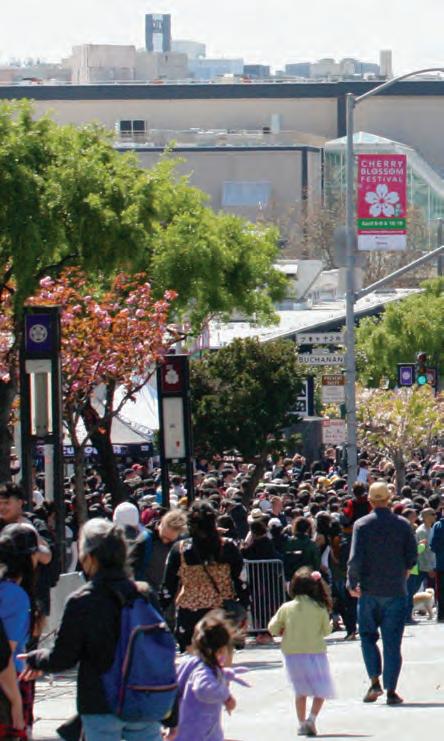
The Grand Parade came back for the first time since the COVID-19 pandemic forced all festivities online and featured floats from many local and community organizations. Starting at City Hall, the parade headed down Polk Street before
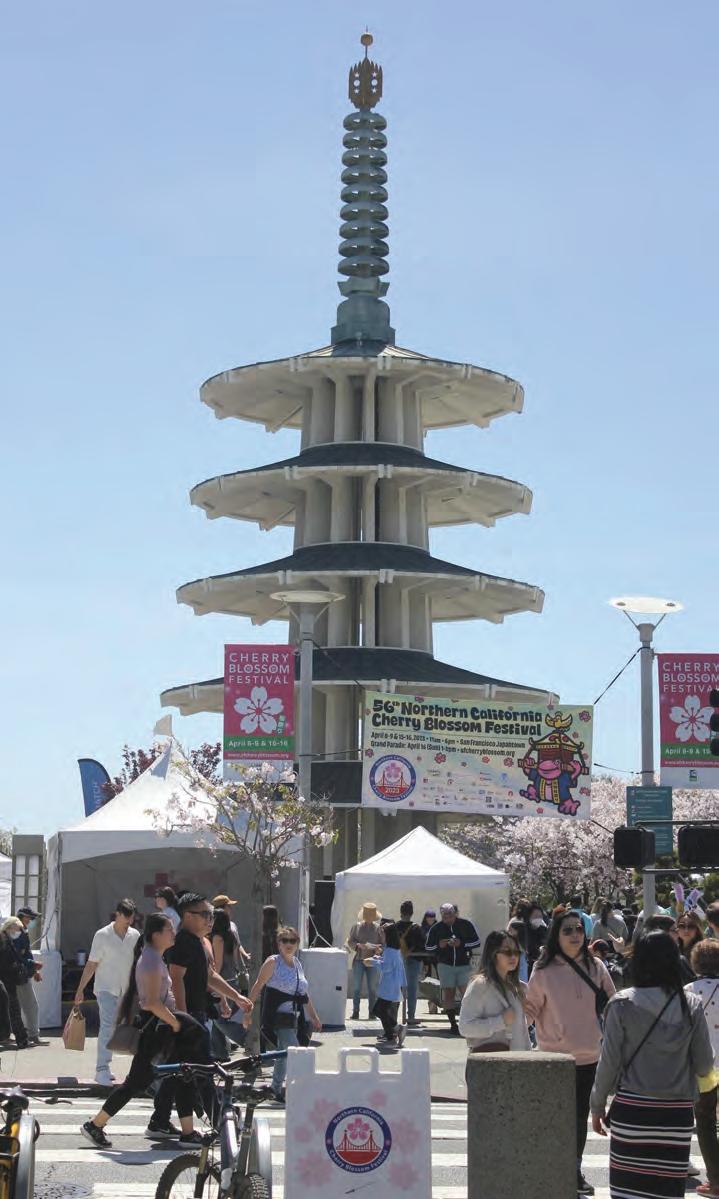
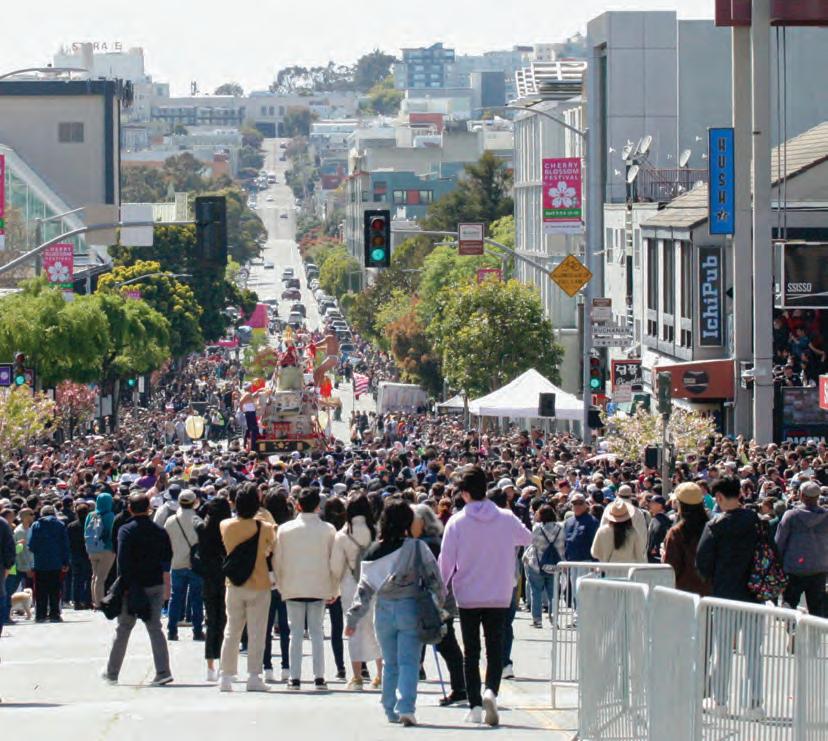
turning left onto Post Street to end just short of Fillmore.
The festival was first celebrated March 29, 1968 after the completion of the Japan Trade Center, along with the five-story pagoda in the Japan Peace Plaza designed by architect Yoshiro Taniguchi which still stands tall off Geary Boulevard. First started to strengthen Japan American bonds and revitalize the local economy, the fourday celebration continues on that legacy.
Originating when Japanese farmers would pray and give offerings to cherry blossom trees in hopes of a good harvest, Cherry Blossom festivals now take place all across the world. Cherry Blossoms are one of Japan’s most iconic symbols, representing beauty and mortality.

There was a lot offered for attendees of this year’s celebration, including stands for
street vendors, an arts and crafts booth, and presentations and performances from the local community. Stalls lined both nearby streets and the corridors of the Japan Center malls, selling souvenirs ranging from keychains and other trinkets to various foods and drinks.
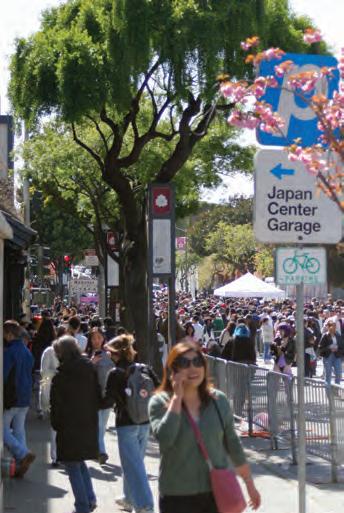
Booths were set up to advertise various services related to the festival and broader
Asian American and Pacific Islander community, such as the Japan Exchange and Teaching (JET) program. The JET program offers opportunities for people to live and work in Japan while helping to teach English as assistant teachers. The program has sent over 70,000 people from around the globe to Japan since it was founded in 1987, serving schools all across the country.
The 2023 Grand Parade’s Grand Marshall was singer and guitarist Kina Grannis, known for her 2017 single Iris, and her cover of Can’t Help Falling in Love which
was featured in the 2018 film Crazy Rich Asians. Grannis performed on the Peace Plaza stage along with many other shows put on by musical artists, dancers, martial arts performers and even cosplayers.
Attendees of the festival walk down Post street, passing by Nijiya Market in San Francisco’s Japantown. With 12 locations in California and Hawaii, Nijiya Market was founded in 1986. (Seamus Geoghegan/Etc. magazine)
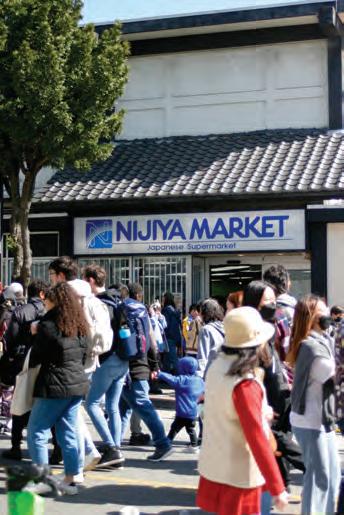
(Above) Festival-goers shuffle past each other in the Japan Center’s West Mall. Additional to the Mall’s existing stores, stalls were set up selling various novelty items like keychains, posters, and more. (Seamus Geoghegan/Etc. magazine)
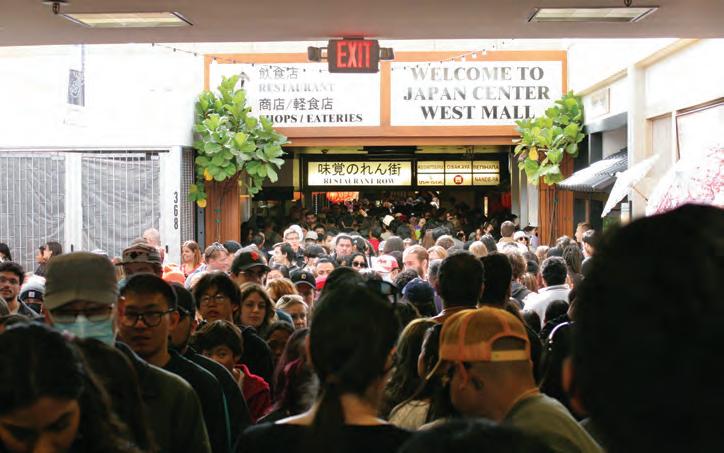
(Below) San Francisco Taru Mikoshi Ren carry their Mikoshi shrine during the festival’s Grand Parade. Attendees of the 56th Annual Northern California Cherry Blossom flood San Francisco’s Post street to catch performances including other traditionalJapanese floats on the final day of the ceremony. (Seamus Geoghegan/Etc. magazine)
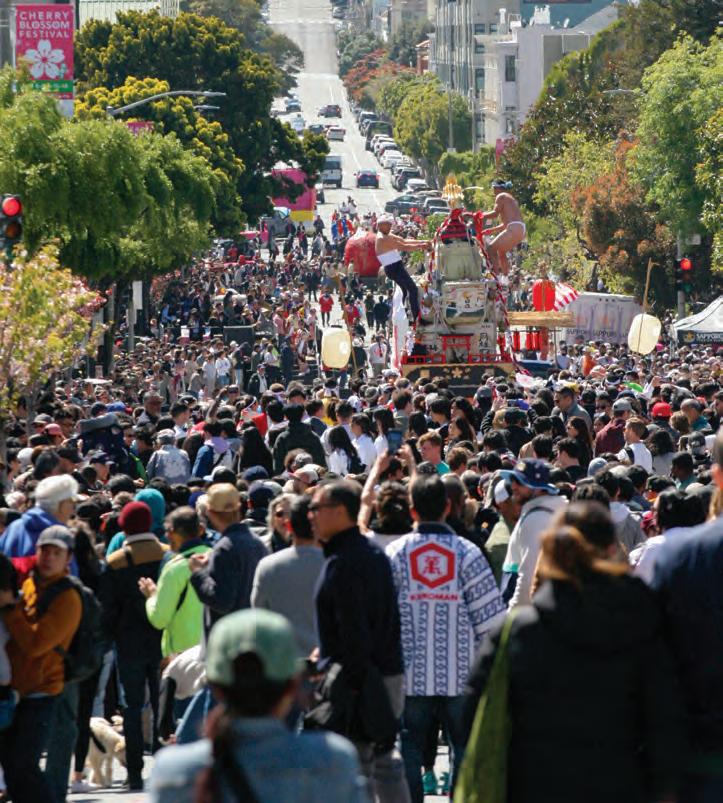
These cards are used to Commemorate Achievements, Special occasions, or for Keepsakes. The Modernity use of Pop-Up cards can be seen at the San Francisco Cherry Blossom Festival. (Larissa Wilson/Etc. magazine)
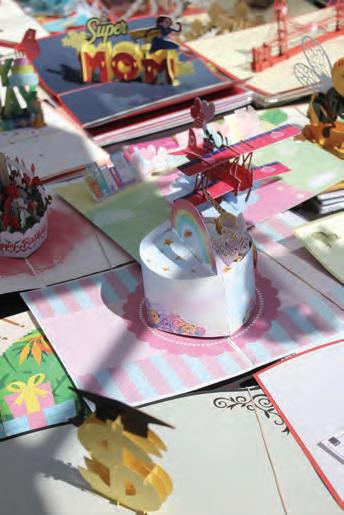
People hurry on busy sidewalks, and the sounds of horns and speeding engines fill the air at the intersection of Columbus Avenue and Kearny Streets in San Francisco’s North Beach neighborhood. It is in the midst of the daily energetic urban scene that poet Lorrie Chang finds inspiration for some of her poems. Seated at a small table outside of her favorite coffee shop with her journal in hand, she watches the movement in front of Columbus Tower, a filming location for some of Francis Ford Coppola’s movies. “There are so many different flows coming together in this one place, and there’s a sort of magic to that,” she says.
A former student of the Writing Poetry class at City College of San Francisco, Chang, 36, found a way to connect with her roots during the lectures. Her poem “There’s Only One Way to Peel an Orange” is the result of one of the class’s revision exercises. A sensory writing activity about a fruit led her to important memories of her family. “This is about my dad who passed away, so it’s hard for me to give his perspective,” Chang said. “My parents immigrated, and all of my family is back in China. I think I’ve always wanted to go find my roots, and writing gives me a container to hold those feelings.”
Poetry was also a valuable tool and coping mechanism for Yenia Jimenez, 30, a former student of the Writing Poetry and Poetry for the People classes. The poet highlights how writing helped her during moments of emotional distress. “I’ve been dealing with depression since I was a child,” she says. “It really motivated me to write, so that other people going through it can feel that they are not alone. Poetry saved me.”
It was during the COVID-19 pandemic that Amanda Barrows, 31, returned to writing poetry. After attending an online poetry workshop, she decided to enroll in Poetry for the People class. “I was looking for something to help me reconnect with my own voice and to keep my creativity flowing after taking a long break from writing,” she says.
The pandemic opened up new digital spaces for poetry writers and readers to find community. In December of 2020, the Academy of American Poets surpassed 250,000 subscribers to Poem-a-Day, a digital series featuring new work by contemporary
poets. According to poets.org, the project had a 20percent% increase in sign-ups over the last nine months of that year, reaching an additional audience of over 500,000.
Instructor John Isles, who has been teaching at CCSF for over a decade, observed “surprisingly good enrollment” in the Writing Poetry classes offered during the pandemic. “Some students joined the classes because they were feeling isolated,” he explains.
Poetry has been experiencing a surge in popularity among adults and young people in America as a whole. A 2022 survey data reported by the National Endowment for the Arts found that 9.2 percent of adults in the United States, equivalent to 22.4 million people, had read poetry in the past year. Nearly 12 percent of American adults had either read poetry or listened to it through various media including broadcasts, recordings and web streams.
“It seems reasonable to assume that growing participation in social media - which incorporates and links to many different streaming platforms - has surfaced more opportunities than before for engaging with poetry as a spoken art form,” says Sunil Iyengar, director of research and analysis at NEA.
The NEA’s 2018 studies revealed that the percentage of U.S. adults reading poetry increased by 76 percent between 2012 and 2017. The results were even more remarkable for young people, as the percentage of poetry readers aged 18 to 24 doubled during that period.

Chang, Jimenez and Barrows all developed an interest in writing during childhood. Jimenez recalls reading works by the American writer and poet Shel Silverstein in first grade, as well as attending poetry workshops. Barrows discovered her writing style between seventh and eighth grade. Chang has been writing since her mother gave her a journal when she was 12 years old. “I don’t think she knew that she was giving me a place to unleash my voice,” she says.
Last semester another student, Oliver, 36, was introduced to the world of poetry for the first time. During the Writing Poetry class, he learned about various aspects of writing, including crafting techniques and literary devices. Among all of the activities that the classes offered, Oliver found the workshops to be the
In a world that wants to shape me into brick walls I want to preserve the softness in myself
I am gentle and soft
I value her
Yemaya & Oshun I give myself back to you I trust in the divinity of virtue
I am powerful
A sorceress
I reclaim my love
I no longer want to be withered by fear of toxic masculinity
There’s no greater love than to nurture you, her I am bountiful and a treasure I reclaim my energy because I am stronger than the forces formed against me
I am prosperous and blessed despite the loss of myself within this process
I am divine feminine
I break down the stigmas with my magic
most enjoyable. “Getting feedback from other people, especially people from diverse backgrounds, is really important,” he says.
Instructor John Isles agrees. He took his first poetry writing class at CCSF after finishing college with an English degree. “The poetry classes are like a model for making friends with other poets and reading books together, showing each other poems. It is a lifelong thing,” he says.
Beyond imagery, rhythm and stanzas: “Take a poem, leave a poem” was the message displayed on a wooden nightstand with a drawer full of poems, blank paper and pens that people stumbled upon in five of San Francisco’s parks. The idea was inspired by Little Free Libraries, outdoor boxes filled with free books that people have shared, and was a result of Barrows’s field project for the Poetry for the People class. Her goal was to share poetry within her community. “I was really anxious about the field project,” she says. “I didn’t know what I was going to do, and I guess it just popped into my mind.”
The poet found unexpected success with her project, receiving an average of five to 10 submissions per day for almost a month, before the nightstand “mysteriously disappeared.” She published the poems on a dedicated Instagram account (@ccsf_p4p). Barrows believes that there are many poets hidden in the city. “Apparently, there’s a robust [poetry community], and maybe everybody is doing poetry how I have been, which is very personal. This was a way for a community of poets to engage and interact with each other.”
It was also in a poet’s community that Chang performed her poems for the first time as a kind of “gift.” “For my 34th birthday, I decided that I was going to learn how to be there for myself and align what I feel, say and do.” It’s on the stage that the poet connects to what poetry means to her. “I feel like my soul is speaking. Poetry allows us to tell the truth in a way that isn’t super direct. You give the visuals because you want to let the reader decide how they feel.”
Following her dreams and passion for poetry, Jimenez is working on her second book. After self-publishing the short poetry book “Visualize What You Read” in 2020, she is organizing a book party for “An Ode to Brown Girls Everywhere,” released on April 13, 2023. Using the self-publisher platform Blurb, the author sold more than 100 copies of her first work. “It felt good to have a big pile of my own books,” she says.
Jimenez was inspired by the Canadian poet, writer and illustrator Rupi Kaur, who gained popularity through self-publishing her first collection of poetry, “milk and honey,” in 2014. Her publishing path involved a combination of self-promotion and utilization of social media to gain a following, which eventually led to traditional publishing opportunities.
Drawing and writing fiction are a couple of the creative practices that motivate Oliver when he’s penning his poems. “I like to compose poetry, thinking about whether a line evokes horizontality or verticality [as a drawing process], whether it zooms in and out and whether it evokes a particular geometry, such as a circle or a plane,” he says. The poetry classes also led him to submit his work to Forum Magazine, a student-produced publication at CCSF that collects, edits and publishes student works of literature and the visual arts, and to share his work at Lit Night, a literary

salon held at Ocean Ale House where writers have the opportunity to bring their writing.
Chante McCormick, a professor in the English department, has taught poetry classes for three semesters. “It is definitely a learning experience for me as an instructor as much as it is for students,” she says. McCormick emphasizes the value of getting a variety of voices from students to make classes more interactive, and recalls one of the activities: the Secret Santa Poem. The instructor asked everyone in the class to submit a poem, but with their name removed. The goal was to help students recognize their peers’ writing styles and voices over time. At the end of the semester, they would exchange the poems and try to guess who wrote each one. “It was a real moment of community in class,” she adds.
The Poetry for the People course is available in the Interdisciplinary Studies Department at CCSF owing to the efforts of Lauren Muller, an instructor and the former chair of the department, who the college lost to cancer in February of this year. The course was founded by CCSF instructor Leslie Simon in 1975 and also draws on a curriculum from a course of the same name founded by Jamaican American poet June Jordan at UC Berkeley in 1991.
On “Lauren Muller’s Festschrift,” a document created to collect contributions to a book to honor the professor, friends and colleagues shared their memories of Muller. Simon highlighted Muller’s path at CCSF. “She transformed the department into an incubator for innovative, cutting-edge multicultural and social justice classes,” says Simon. “Along the way she mentored faculty and helped them realize their dreams,” she says. According to Simon, Muller loved working with students to organize poetry readings at the end of each semester. “Lauren’s legacy at City College is immeasurable. It will continue to grow in classrooms and the larger City College community to which she was devoted.”
Maggie Harrison, Women & Gender Studies department chair and English faculty, remembers how Muller influenced their teaching through the book edited by Muller titled “June Jordan’s Poetry for the People.” “Lauren was the quiet leader who fought for this education, who defended it, who nourished it.”
Harrison was also Muller’s student and experienced some of her pedagogy of Poetry for the People. “I can see her resolute expression and hear the beat of her hand on the desk as she recited Joy Harjo’s ‘I Give You Back,’ refusing fear a place to live in ‘my heart my heart my heart.’ She listened carefully to students; she created space for their discoveries; she welcomed joy when it came knocking.”
 M
by Amanda Barrows
M
by Amanda Barrows
stock the forest outside the glass and convince you to stay in bed with me sunshine emergencies like my hands on your body warming the frozen dancer center inside soul heart thoughts do not form a triangle as much as facilitate an opening and vast transparency in the middle of sharp corners and tidal processes flooding falling the foghorn rolls through the leaves through the screen in waves lit by candles and a purple and silver plant that tries to stabilize on a floating frame occupied sealed I am always inside here listening while the tree blows and bends and grows outside
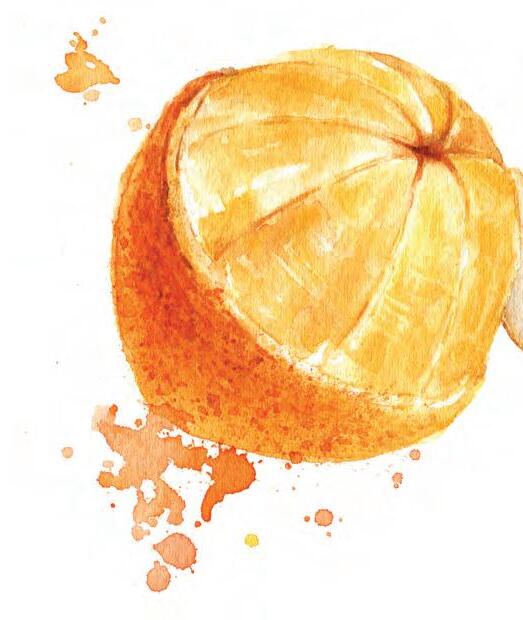 by Oliver
by Oliver

She wears her skin like Monet’s diminishing sun, engulfed in wild brushstrokes of red & brown & yellow. Through her translucent flesh, I see tiny veins crawling and fluctuating, like she is blushing under my persistent gaze.
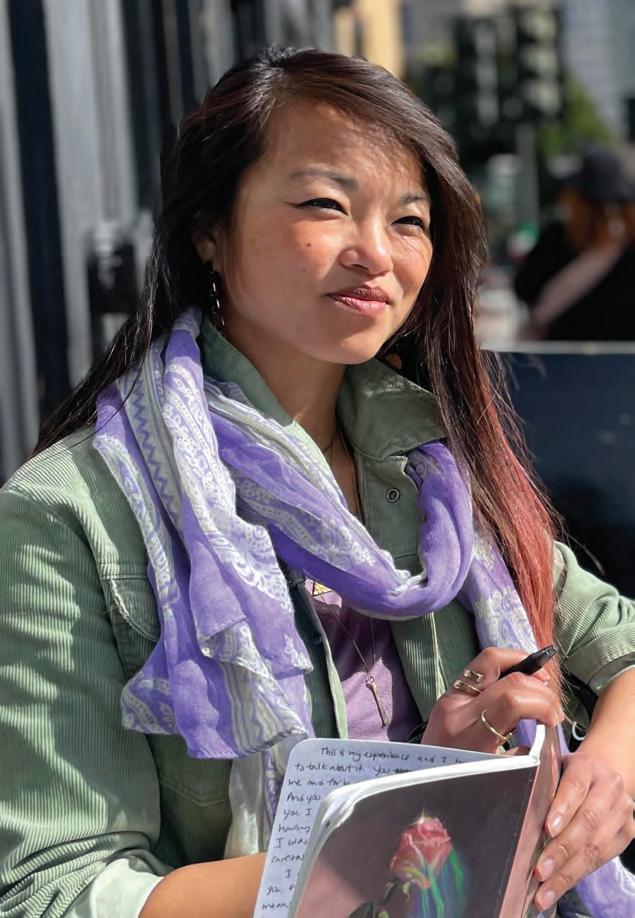
I draw a half moon tracing her silhouette; a touch of sin! Brushing the frosty, firm shape of the contour—your ear.
In your cochlea, her drunken black seeds succumb to a bed of bubbles, dreaming about fruition and debauchery. I bite into your ear and hear a crude sound— her unfazed rupture! As she bleeds through the aroma of honey and wine.
I whisper in your ear: “remember that Sunday?” when we sat on a picnic blanket painted in a palette of blood & earth & gold.
Poet Lorrie Chang sits at her favorite coffee shop in the city, where she finds inspirationgive me your hand mui mui circle the top like the Orange instructs, carving little lines like gong gongs and poh pohs steady side-to-side shuffle, carrying a heavy heart for their homeland and a hopeful hustle for children they don’t quite understand
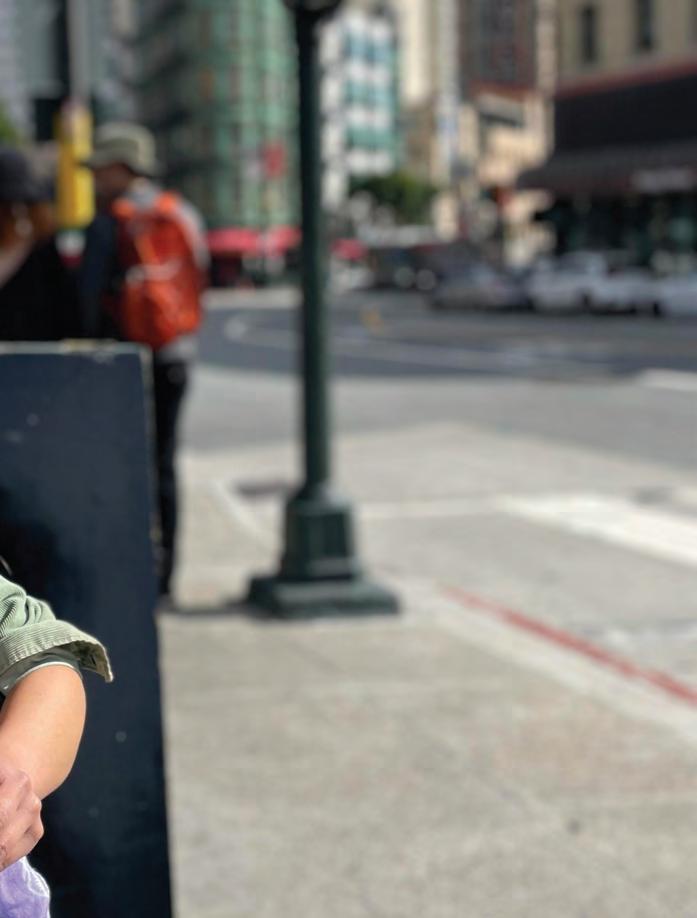
Did you know the Orange is perfect? like a stretched palm bear hugging a bowl full of steaming rice no end no beginning like your little hand in mine
Did you know the Orange’s Origin is Southern China? like your body, your baba, Our blood one day, may you trace branches bustlin in each other’s business, trunk unteetering to weathered time, and roots guarding sacred knowledge May you find all that i couldn’t tell you
Did you know the Orange first appeared in Chinese Literature 314 BC?
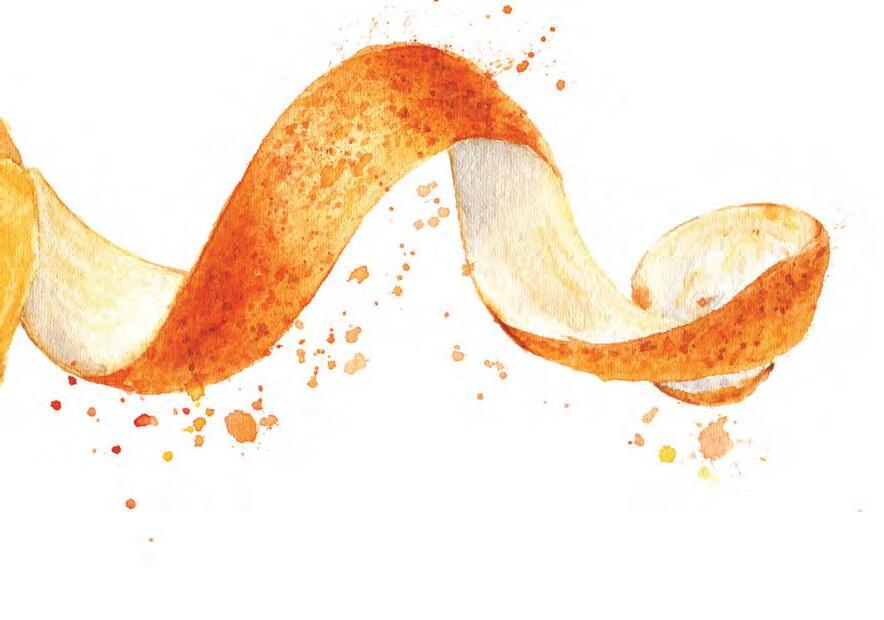
i spent my life swallowing my words like sliding sticky molasses but you, your words are meant to fly like geese in formation, breaking open the silly lines humans draw May you write to root, write to root and answer what is Yours
i told you a tree grows if you swallow the seed of an Orange what i didn’t tell you is how We carried that seed through passage of rings of rotations, buried oceans, and sealed throats. so when they reach into suck your Spirit once more let The Seed rupture ripple and root and rise and Rise And Rise
Now, in your hands circle the top, like the Orange instructs carving little boats like the voyage to the new land and savor and savor and set sail because mui mui do you think We ever left you
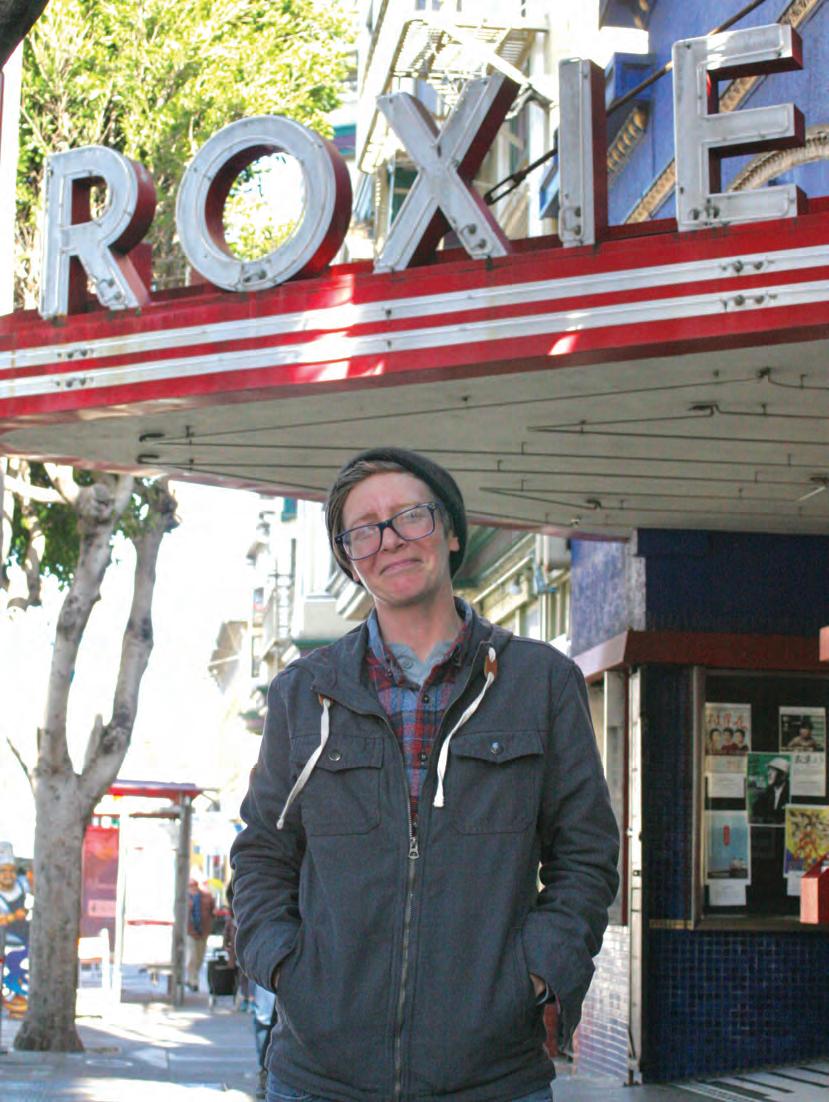 Story by Gracia Hernandez Rovelo / Photography by Seamus Geoghegan
Story by Gracia Hernandez Rovelo / Photography by Seamus Geoghegan
The COVID-19 pandemic impacted the theater industry significantly. Theaters across the country were compelled to close due to public health concerns, some shutting down temporarily and others closing permanently. Independent movie theaters were already dealing with tough competition from streaming services and online entertainment prior to the pandemic, and they continue to face these challenges on a higher scale post-pandemic. People have increasingly changed their viewing habits due to COVID lockdowns, case surges and social distancing measures.
Despite the trend of opting for the convenience of watching content from home, independent theaters offer a unique moviegoing experience that streaming services cannot recreate and to stay competitive, theaters in San Francisco needed to be socially innovative, adapting to changing consumer preferences by expanding their offerings beyond traditional movies and upkeep the demands of consumption. The pandemic created opportunities for theaters to adopt new technologies, new approaches and community building.
Indie theaters like The Roxie, Castro, Phoenix, Balboa and Alamo Drafthouse were forced to make tough decisions, such as reducing staff and switching to virtual forms of entertainment and cinema. The Roxie decided to close on April 13, 2020, a few days prior to being forced to shut down due to shelter-inplace order. Executive Director of the Roxie Theater Lex Sloan, indicated that the theater remained closed for 435 days, halting the rehiring process for over a year after layoffs.
“We had a staff of about 25 when we closed our doors and we had to lay off 20 of our staff members, and it was really hard,” Sloan said. Theaters like the Roxie serve as a gateway for generations
of people to begin their career trajectories providing valuable skills within the organization, sharing a deep connection to the theater and its history. The pandemic health regulations caused abrupt changes that affected consumption demands. Restrictions on public gatherings like social distancing measures and reduced capacity, pushed theater owners to close their doors, affecting the economy of nonprofit arts organizations and global entertainment industries. “For a really long time, longer than most places we required proof of vaccination, masks, and we kept more restrictions that we were required, but we wanted to keep our community as safe as possible,” Sloan said. It is important to note that budget cuts in the nonprofit sector had a significant impact on operations, revenue and longterm sustainability of smaller organizations, including independent theaters.

The pandemic has emphasized the importance of community support for independent theaters. Numerous local communities united to support their theaters through donations and advocating for government aid. Sloan had been actively seeking relief funding to keep the theater afloat, and she believes it was the financial aid they managed to receive from the state and the city that played a vital role in keeping their business going. Meanwhile, her programming team focused on engaging
with their audience to keep people thinking about cinema and thinking about the Roxie. They teamed up with Cinema SF, an organization that runs multiple independent theaters in San Francisco, to do pop-up drive-in screenings where people could watch movies from the comfort of their cars and keep social distancing to adapt to the restrictions during pandemic.
“We were very much together and just navigating the unthinkable,” Sloan said. She expressed her gratitude for the outpouring of support from the community during closure. She said that receiving not just the financial aid but also all the encouraging words from the public was heartwarming and made them feel loved. Moreover, she highlighted the reopening experience and how remarkable it was, as people were moved to tears simply by being able to come back and watch movies at the theater. “Having the community be our cheerleaders was really the heart of why we were able to reopen,” she said. It was not just about watching a movie, but also about the communal experience of sharing emotions with strangers – laughing, crying and experiencing film together. The Roxie dedicated weekly newsletters, postcards, emails of encouragement and programmed activities to strengthen the road to an unforeseen reopening. “It was a lot; we were making up new things as we were going every day, we weren’t ready to shut our doors and be
quiet,” Sloan said, “to be able to welcome back our regulars, fire up the projectors and pop the popcorn made all the struggles of the past two years totally worth it.”
As a 501C3 organization, Sloan referred to the independent theater business as “a labor of love.” Their primary goal is not to generate profits but to fulfill their mission and put in hard work to prioritize the preservation of film culture, “we’ll never make a ton of money doing what we do and that’s not the point of what we are here,” she said. Indie theaters are playing an important role by showing classic films, hosting film festivals and private screening events. They have broadened the experience to preserve and make movies that are thought-provoking and socially relevant available to younger audiences. Among numerous strategies implemented by movie theaters, such as contactless and digital ticketing, the transition involved going through alterations to the physical environment for safer faceto-face interactions on indoor areas with state-of-the-art air filtration systems and outdoor show programming. This includes screening with a live score, sing-a-longs to interact with the movies, classic cinema and making hundreds of films available to stream online.

According to Sloan, the Roxie theater showcases a substantial amount of classic cinema. Many of the titles exhibited are unfamiliar to younger generations who have not experienced watching them in a cinema before. Despite this, young people are aware of prominent filmmakers like John Waters and are enthusiastic about seeing their work on the big screen in odorama – a unique sensory experience that involves scratch-and-sniff cards that were given out for free at screenings, each corresponding with a smell in the 1981 film Polyester. The Roxie is one of the few remaining movie theaters that still use 35 millimeter
projectors from the early 1940’s with the best waves of sound and more vibrant colors. Sloan finds it fascinating to witness an emerging demographic of film enthusiasts supporting independent theaters and with an appetite for film-going experience the old-fashioned way.
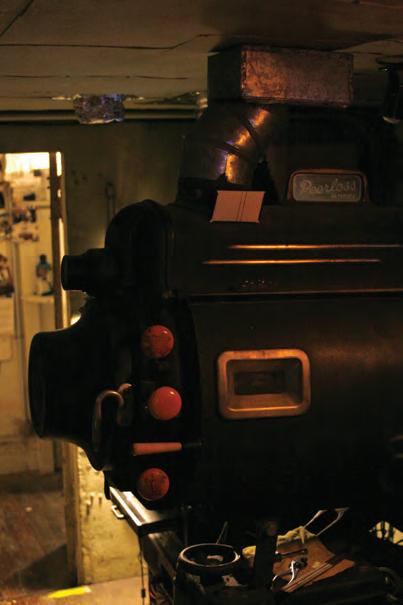
“Our commitment to showing film on film is something that we are really proud of,’ Sloan said, “It’s really cool to see a new younger generation of the filmgoing audience coming out and representing and keeping the Roxie going; it’s a much more cross-generational experience at the movie theater.”
During the pandemic, movies planned for theatrical release were instead premiered and streamed on services like Netflix, HBO Max, Hulu, Amazon Prime Video and many other entertainment platforms. The data from the Motion Pictures Association reports that in 2020 digital platforms had an 82 percent consumption rate, leaving theater consumption to an astounding 7 percent. The film industry has demonstrated its strength and resiliency by achieving a notable economic recovery during the year 2020-2021. The worldwide box office reported an 81 percent increase in 2021, reaching $21.3 billion, attributed to the reopening of theaters after the lockdowns imposed during the COVID-19 pandemic, but this number still remained below pre-pandemic levels. According to Comscore data, ticket sales for the 2023 box office have reached $958.5 million, representing an increase of about 50 percent compared to last year and as studios release more films, sales should continue to rise. Despite many challenges, movie theaters thrive in the current environment. Indie theaters like the Roxie are now up from 50 percent to 70 percent on ticket sales compared to this time last year, getting closer to where they were in 2019.
Between the ongoing pandemic and proliferation of
(Above) Roxie Executive Director Lex Sloan sorts through the theater’s archives containing old posters and calendars dating back to the early 70s. April 13, 2023. (Seamus Geoghegan/Etc. magazine)streaming services, many people prefer to wait and watch movies in the comfort of their own homes, instead of going to the theater. This trend is particularly noticeable with smaller, independent films that are being overshadowed by big-budget franchise movies. In 2021, almost all the top films in the US had production budgets exceeding $100 million, which shows that the movie industry is becoming increasingly dominated by blockbusters. Indie theaters do not feature highly popular movies such as Super Mario, Aquaman or John Wick but they have access to limited release films that attract moviegoers who seek to watch unique content, movies that are not only entertaining but have educational and cultural value. “We show so many different movies a week, sometimes we have 12 or 15 different films for showing, and part of the reason we do that is to make sure there is something for everyone here at the Roxie,” said Sloan.
In recent online data, from a global point of view between multiplexes and independent theaters, profitability from concessions sales is larger than ticket sales. “If you are coming to the Roxie or any movie theater and you really want to support independent cinema, buying concessions is key,” said Sloan. Meaning, that even if the ticket price is listed as $15 or $14, half of the ticket price goes to the distributor and sometimes shares earnings with the artists. Survival of movie theaters depends on the revenue from the sales of refreshments like beer and popcorn or merchandise like t-shirts. Many theater chains are innovating their menus, with upscale food and beverage promotions, to attract audiences and generate streams of income to sustain their operations.
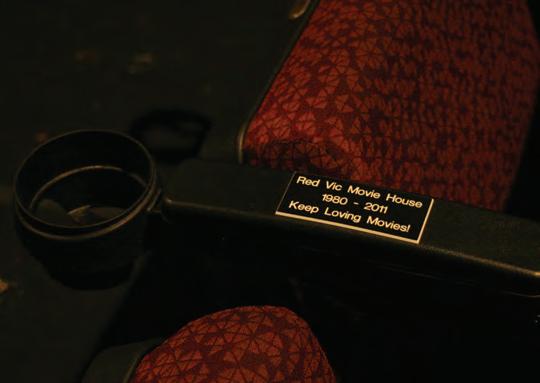
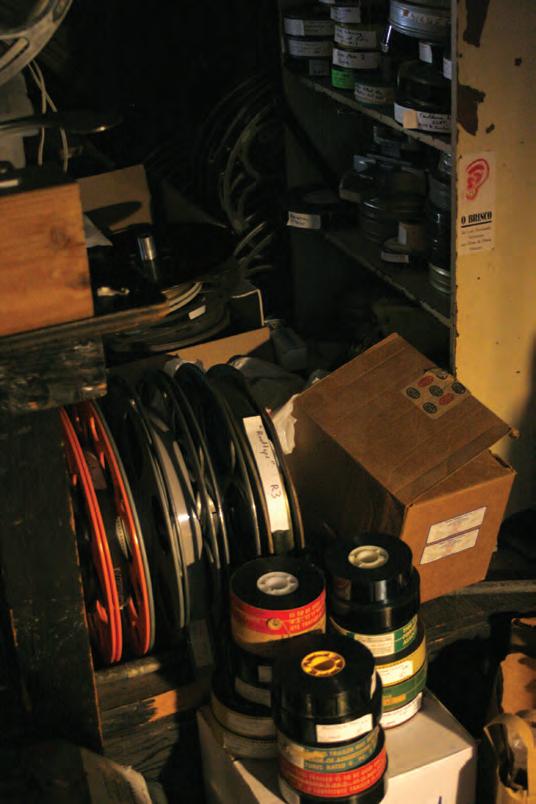
Theater chains, big and small, have proven their adaptability and continue to evolve; providing movie enthusiasts with novel and unique experiences that cannot be found on streaming platforms. One way that theaters have been able to offer such experiences is through the expansion of high-end formats such as IMAX, 4DX and Dolby Cinema. Theaters have invested in upgrading to premium services like better sound systems,
bigger screens and dynamic seats with technological features that allow people to experience movement and vibration in sync with the film. These technologies offer an exceptional cinematic experience that cannot be replicated at home. Shelli Taylor, the CEO of the Alamo Drafthouse, has stated that they are committed to ensuring that all their theaters continue to upgrade, aiming to maintain the high-quality, premium experience that people expect from the Alamo.
Facing many challenges for centuries in the rapidly-evolving world of media and entertainment, movie theaters have proven their resilience and continue to attract millions of people. The film industry continues to produce movies that are meant to be seen on the big screen, allowing the independent cinema experience to remain unique and being an irreplaceable part of the film culture. Movie theaters are making a comeback despite the ongoing threat of COVID-19, providing a space for people to come together and share synergic experiences that goes beyond just watching a movie. “We are more than just a movie theater, we are a place where people make memories,” Sloan said.
Stationed in a tucked-away corner of greenery behind the Creative Arts building on Ocean Campus, Steven Brown heads City College’s Environmental Horticulture and Floristry Department working primarily to serve the community of adults interested in the retail floristry program offered within the department. Classes are packed with students and Brown is the only teacher.
“We’re one of the last. We may as well be the last retail floristry program where students get all of their training under one roof. We offer a degree and a certificate in Floristry, as well as a program in event planning,” remarked Steven Brown, as he gathered fake leaves, flower petals and accessories for creating a bouquet.
The certificates are kinda tough right now, says the chair, due to layoffs that have occurred. Brown voices his concern on the matter of teachers being delegated endlessly across the country with voluntary and involuntary pay cuts to avoid layoffs. “I reduced my pay for a year so that they wouldn’t lay off our colleagues and as soon as that year was out and our pay was restored, they did it anyway; not as many people, but they still did it.”
“I wasn’t able to buy a car, I couldn’t take out a loan on a house because I didn’t have any job security.” That’s just one of the reasons that teachers fought for many years to have tenure— it’s been in existence for over a hundred years and it is a time-honored tradition, says Brown.
Prior to his position at City College, Brown worked in the floral industry for about 10 years before happening upon a part-time position at the college teaching Introduction to Flower Arranging. From there, Brown was given the opportunity to teach more courses. The pioneer worked part-time for five years, full-time for 32 years, and has been serving as chair for the last 22.
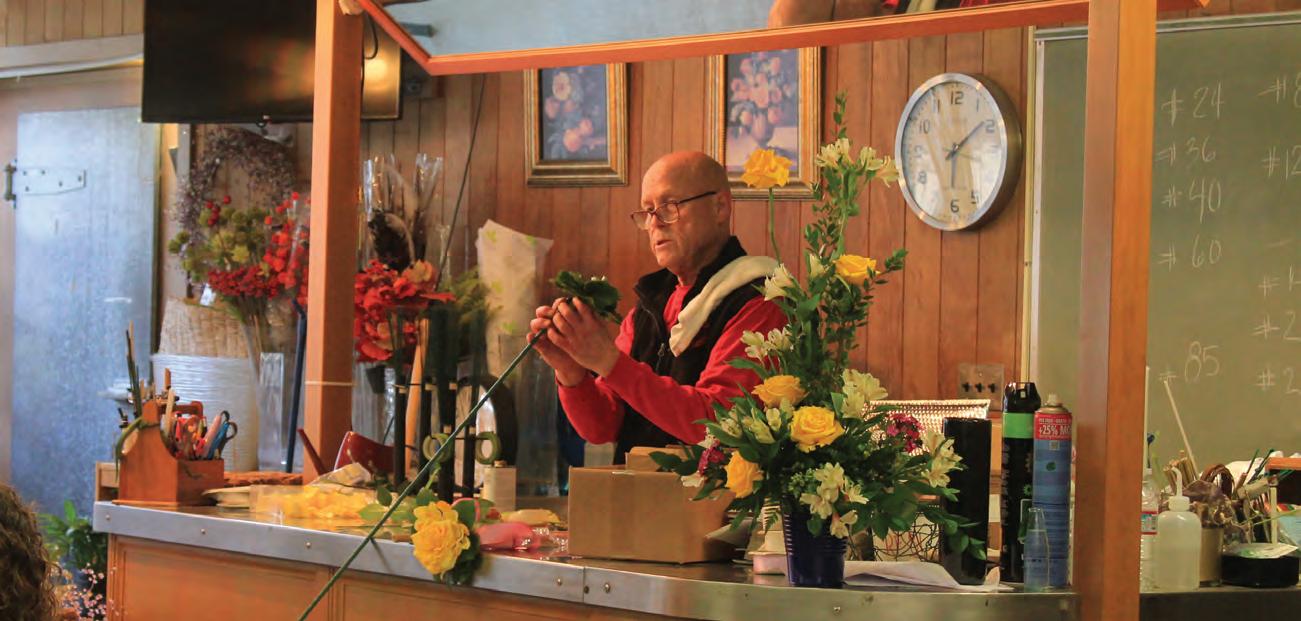
“We do so much to help people express what they can’t say in words, we help them express it in flowers and plants. Brown says that the floristry program at City College is one of the best, with “a lot of the most successful florists, as far as being in business for
a long time, [having been] trained here.”
“It’s definitely made me realize that this is a possibility as a career; it’s actually turning into a business for me already,” floristry student Jessica Nguyen said. Nguyen, who created an Instagram account to display the floristry program’s coursework in action, has grown aware of the program’s struggle to offer multiple classes. “We’re still fighting to get our understaffed program enough teachers, so that we can actually graduate in two years.”
Undeterred by the lack of support from the college’s administration, Nguyen is enthusiastic to share her experience of floral artistry displayed at the de Young Museum in Golden Gate Park.
“Last year, five students were able to participate in de Young Museum’s Bouquets to Art,” Nguyen said. “The event is held every year by the museum to uplift the program … with a mannequin being entirely dressed by selected students using fresh flowers and plants.”
One new student enjoys the accessibility and convenience of this class as a single mother. “I’m able to attend these classes, learn the skills I need, see what the mechanics and patterns are for making these beautiful arrangements, so that I can provide an income for my kids.” The course is at night when she is not working her day job. She’s given an education at a low-cost and she can take every floral arrangement she’s completed during laboratory time home to show her family.
“Steven’s making sure we’re burning our profit, taking care of our product. He’s making sure that we are workers that can go out into the workforce who will be hired and make our employers happy.”
She mentions how an increase in revenue for employers leads to more taxes being paid for the city. What Brown is contributing, which are skilled students who are ready to efficiently work, is ultimately greater earnings for the city. It’d be unfair to compare the interests of City College’s administration for the floristry program to Brown’s intentions for San Francisco and the floristry
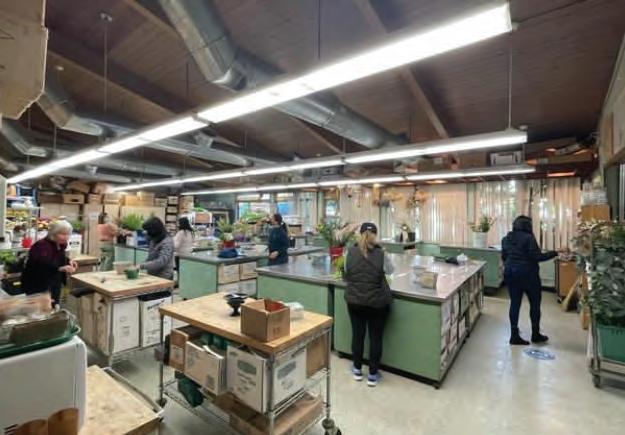
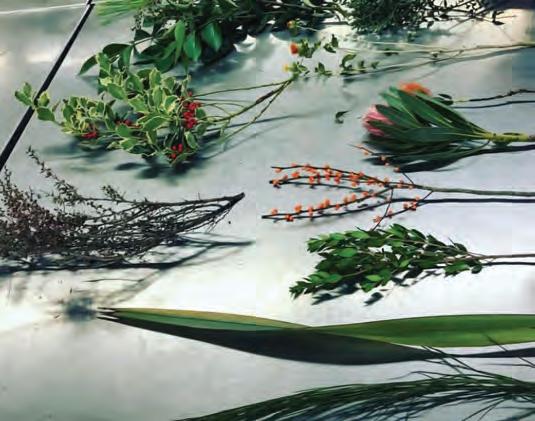
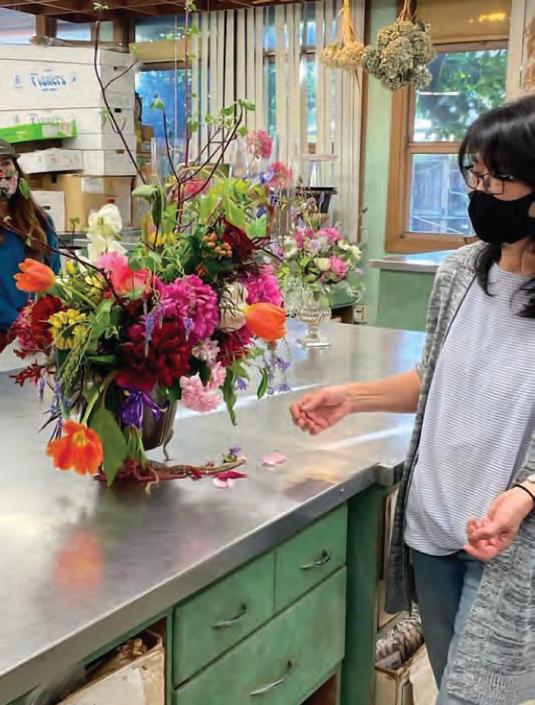
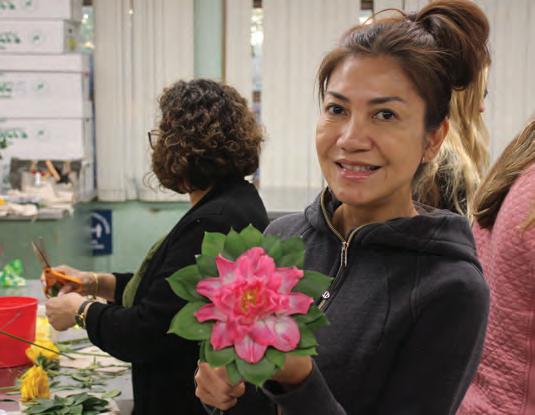
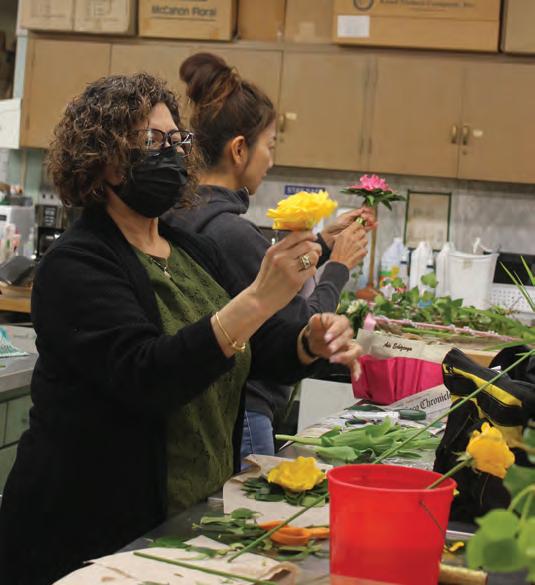 Ade Echizenya and Mirna Osorio holding where the stem meets the petals so they don’t fall off. On Wednesday, March 22, 2023 at Ocean Campus. (Larissa Wilson/Etc. Magazine)
A student poses beside her final arrangement in Flower Shop Procedures and Basic Design where she used peonies and plants from her own garden to deliver her piece. Photo from @ccsffloristry
CCSF’s Environmental Horticulture & Floristry Department sits on 5 acres of land on the Ocean campus. There are glass greenhouses, demonstration gardens, and classrooms with plenty of space and lab area for students to practice their craft.
Photo from @ccsffloristry
These are plants in the Flower/Plant Identification class where students can learn up to 100 common and scientific names of flowers and foliage. Photo from @ ccsffloristry
Ade Echizenya and Mirna Osorio holding where the stem meets the petals so they don’t fall off. On Wednesday, March 22, 2023 at Ocean Campus. (Larissa Wilson/Etc. Magazine)
A student poses beside her final arrangement in Flower Shop Procedures and Basic Design where she used peonies and plants from her own garden to deliver her piece. Photo from @ccsffloristry
CCSF’s Environmental Horticulture & Floristry Department sits on 5 acres of land on the Ocean campus. There are glass greenhouses, demonstration gardens, and classrooms with plenty of space and lab area for students to practice their craft.
Photo from @ccsffloristry
These are plants in the Flower/Plant Identification class where students can learn up to 100 common and scientific names of flowers and foliage. Photo from @ ccsffloristry
industry.
Business owners Daniel Targino and Luciana de Oliveira, students of Brown, run a floral shop of their own in the city. The couple started their business, Flowers World CA, in 2020 at home where they remained for two years until they moved into their new shop on Sutter Street in 2022. “We came to City College to improve our skills and to gain some new ones. I heard about the program being one of the best in the country” said Targino. Both of them have always had a love for flowers and drew inspiration from a friend of theirs. “Last year, there were three instructors, but now it’s just him [Brown]. He’s doing his best, and we are all learning, but if there were more people to help him, we could get more skills,” Targino said.
Students in the department are aware of the struggle between administration and instructors regarding finances and layoffs, but they are persistent in achieving their academic and career goals — showing gratitude and dedication to the determined department.
Brown added, “they did it, not necessarily to lay people off, not necessarily to relieve the college’s budget because they’re still complaining about finances, but they did it so that they could show that they could lay off tenured faculty. It’s happening not just here, it’s happening around the country.” Brown continues to apply pressure. He is well-acquainted with educational institutions. His grandmother and great-aunt were both teachers as well.
The one thing Brown has observed time and time again over the last 30 years are people who do not want instructors, especially college instructors, to have protected job security.
Be that as it may, Brown is driven. He is rooted in his purpose and passion for teaching the fundamentals of floristry to his committed students. Brown explained one of his favorite aspects of his department. “We have great diversity in age, in income levels, in personalities, in race, we train everybody; we have no problems with diversity or equity gaps.”
One of Brown’s favorite people of all time, Mrs. Brown, came through his department as a student at 95 years old for a flower arrangement class. Mrs. Brown would come to class and her great grandchildren would play on the lawn while she worked in class with the same flowers, vase, and arrangement every week. She was the nicest, most pleasant, wonderful woman that Brown ever saw in that class, and he keeps her memory alive in his heart.
Nguyen said Brown is the rock of the department. “He’s been here for decades, he’s very nurturing of students coming into the field, and he knows so many people in the industry… It’s really cool to see so many students in the industry right now having been taught by him and other instructors of the department.”
Nguyen and Brown continue to campaign their enduring program on Instagram @ccsffloristry.
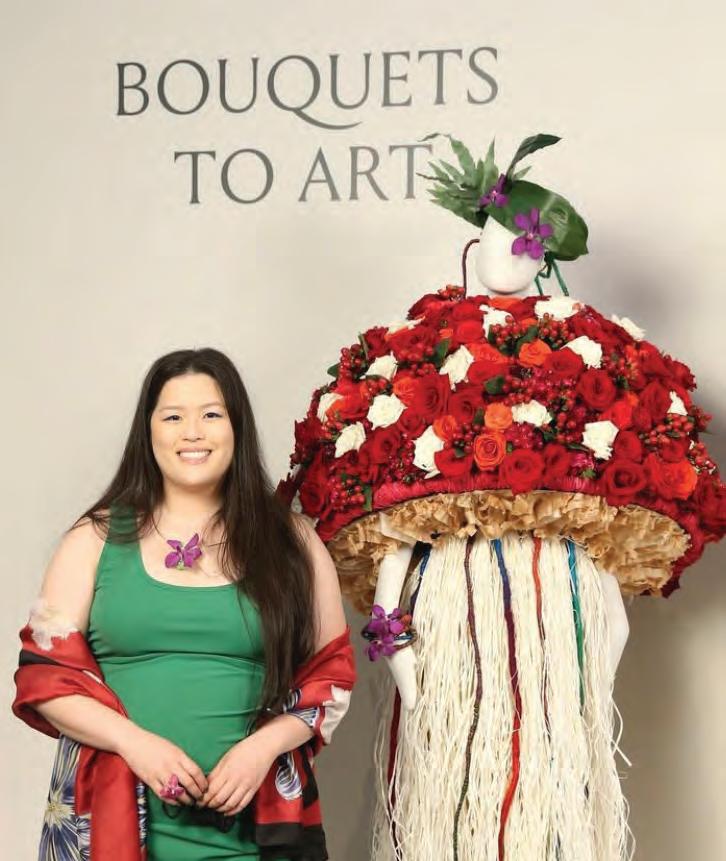

“One of the greatest shifts that will occur in our lifetime is going from driving to being driven,” said Kyle Vogt, co-founder and CEO of Cruise, to Fortune magazine.
If you live in San Francisco, you may have noticed the emergence of self-driving taxis. Two innovative companies, Cruise and Waymo, are increasing their presence on city streets with their futuristic cabs, operating with no driver in sight.
San Francisco has served as the home base for Cruise and Waymo since the two companies were founded in 2013 and 2009, respectively. In 2015, residents first became accustomed to seeing hands-free drivers, who were employed to supervise test

runs. In October 2020, Cruise began testing driverless cars around the city. Those vacant faces were gone from the driver’s seat, and it was no longer a surprise to see a cab without a human at the wheel.
Now, Cruise is leading the way by introducing its automated ride-sharing service to the public. It is not uncommon to see passengers using the service, whether they are heading to work, or taking a drunken ride home. It appears that the future is coming, and it is coming at speed. While Cruise is eager to expand its service, not everyone is quite ready.
“At the moment, San Francisco is not supportive of Cruise’s and Waymo’s request for permission to serve all of San Francisco, 24/7, with an unlimited number of vehicles,” says Tilly Chang, executive director of the San Francisco County Transportation Authority (SFCTA).
On January 25, 2023, the SFCTA issued a letter of protest to the California Public Utilities Commission (CPUC) regarding the hasty expansion of Cruise’s autonomous fleet of vehicles. In the letter, the SFCTA expresses concern that Cruise would be making “consequential decisions about future expansion… without input from the CPUC, the City, or the public.”
Testing the Driverless Experience
An automated ride-share service that is forecasted to take over the city streets is no small matter, so I decided to try it out. With a simple app design almost identical to those of Uber and Lyft, it did not feel like I was doing anything extraordinary. That is, until my driverless Cruise car, dubbed “Painted Lady,” arrived at my driveway to pick me up. I unlocked the door using my phone, and was instructed by a recorded voice to buckle up. The car
did not move for around a minute. I wondered if I had made a mistake, as the invisible driver and I sat in awkward silence. Suddenly, it took off at a steady speed and within minutes I had grown fairly accustomed to being driven by a robot.
The fare for the driverless trip amounted to $17.30, while an Uber ride at the exact same time would have cost $14. Lower fares are an attractive premise for Cruise and other prospective driverless taxi companies, because they won’t have to pay for drivers. And passengers won’t have drivers to tip. Cruise is still in the early stages of operation, and their higher pricing can likely be attributed to this, but in light of the company’s ambitions to expand to over 5,000 autonomous vehicles in San Francisco, Cruise will have to slash prices in order to compete with other ride-share companies.
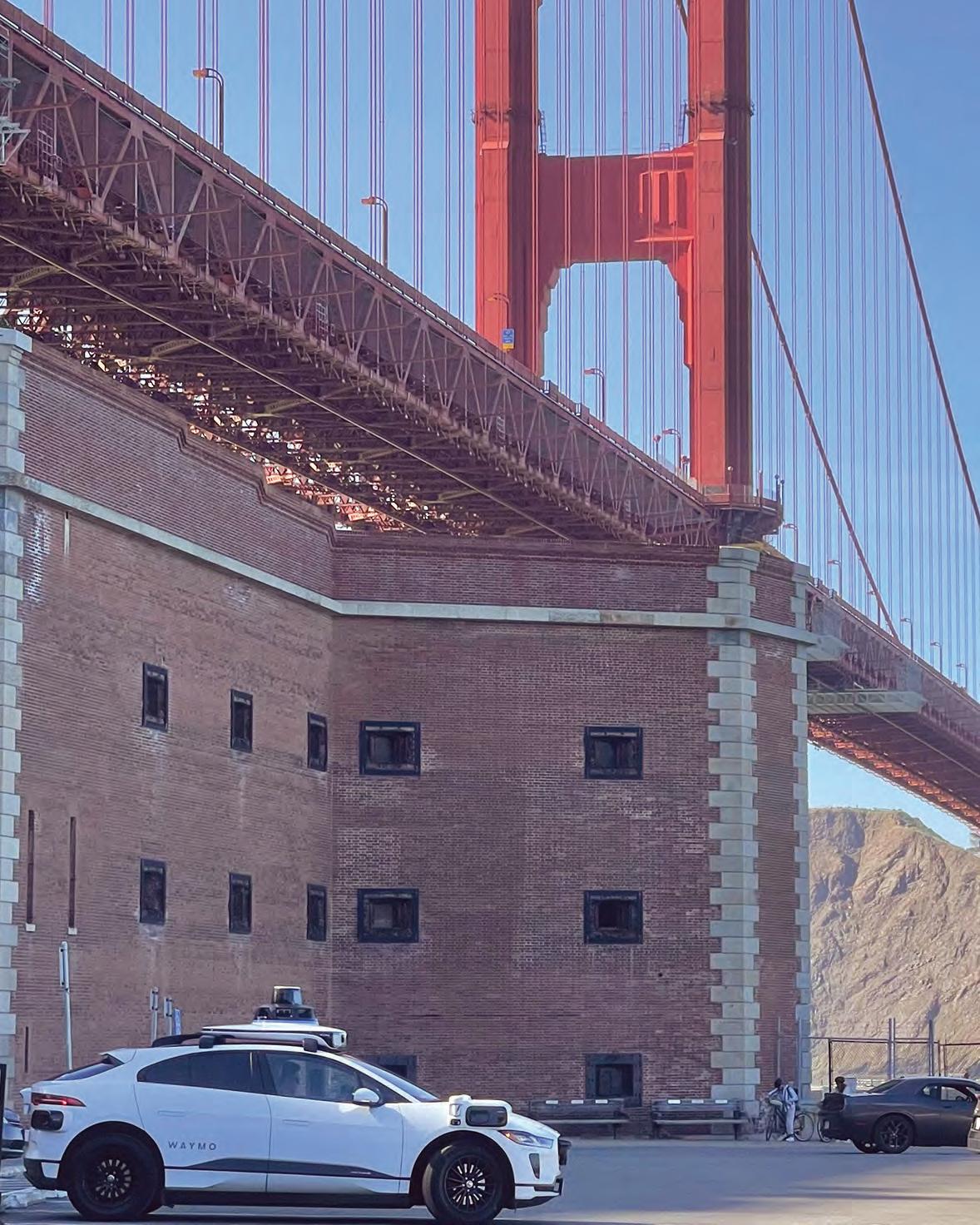

The car operated smoothly, taking a much quieter route than I would have. It did not surpass 30 mph, so I felt entirely safe. What resulted was a five-mile drive that extended from a usual 15 minutes
to a lengthy 29 minutes. Patience is necessary, as this is by no means a getaway car, and stop signs are exaggeratedly obeyed. I took the time to relax and was impressed to find touchscreen entertainment, boasting modern amenities such as FM radio and trivia. While this voyage was smooth and simple, there is still a lot for Cruise to consider before expanding its operation.
When Cruise first opened to the public, certain limitations were placed on its service by the SFCTA, reducing commercial operation to a “confined area of San Francisco” and only “between the hours of 10 p.m. and 6 a.m.” These restrictions were deemed necessary, along with limiting Cruise to less than 100 vehicles, to prevent a previous traffic mistake from repeating itself. “There is a risk that [automated vehicle] services mimic the [rideshare] experience in SF,” SFTCA’s Chang says, recalling the congestion issues that Uber
and Lyft brought to San Francisco. In 2016, the SFCTA found that “25% of all travel delays on an average weekday” were caused by Uber and Lyft. The fleet size of Uber and Lyft vehicles from this survey stood at around 5,700, a size similar to the fleet that Cruise wishes to operate with immediate effect.

In December of 2022, Cruise submitted an advice letter to the CPUC requesting that their domain be expanded to the “entire 7x7 [miles] of San Francisco” with the ability to operate 24/7. However, the SFCTA protested the request, citing concerns of “hazards and network impacts caused by autonomous vehicle obstructions.” With 92 reported incidents from June to January and the SFCTA suspecting many unreported incidents, Cruise has gained some notoriety around town.
In October of 2022, I witnessed a Cruise robo-taxi take a leisurely 30-minute break in the middle of 24th and Folsom Streets. It resulted in a chaotic traffic jam that prompted a group of vandals to spray paint the idle Cruise car, an off-route MUNI bus and several other vehicles. Ilya, a 32-year employee of Yellow Cab SF, got stuck behind a driverless vehicle at the intersection of Masonic and Geary in January of 2023. “Nobody knows how to react when there isn’t a driver,” he says.
In a September 2022 letter to the U.S Department of Transportation, the San Francisco Municipal Transportation Agency (SFMTA) suggested that if the performance of Cruise vehicles did not improve, the company “could undermine public
confidence in all automated driving technology.” Public distrust in automated technology could prove to be harmful not just to private companies like Cruise, but also to the ambitions of the SFCTA, as it plans to utilize automated technology in public transportation.
According to Chang, the SFCTA is conducting a nine-month pilot, from the spring of 2023 to the winter of 2024, of an autonomous shuttle that will operate “on a fixed loop route” around Treasure Island. It will be free to the public. “Unlike Cruise and Waymo vehicles, the Treasure Island pilot will have an attendant on the vehicle at all times,” she says.
While protests from the city and numerous traffic incidents may suggest that the company is expanding too quickly, there are convincing reasons for Cruise’s swift growth. Cruise’s 2022 Safety Report justifies a “rapid transition to electric vehicles” by highlighting the “structural issues” it will solve within the transportation system at large. Reducing carbon emissions, U.S. road deaths and transportation inequity for people with disabilities are tasks that Cruise is set on tackling. The company’s goals echo the values of San Francisco’s Transit-First Policy, “the North Star for the city’s transportation” as Chang puts it. If companies like Cruise can minimize their mistakes going forward, a future of transportation that once seemed like science fiction could very soon become reality.
Between Market and Powell Streets, a crowd of tourists is waiting for a cable car ride. Along these streets, the typical dynamic chaos ensues: oil drops, from a hot dog grill arranged on the sidewalk, are popping up in the air; buses are honking at cars and pedestrians in their lane. In the distance, a fire truck siren wails. People walk in and out of the mall, others bargain with the sidewalk stallholders, and the homeless sit between bags, dogs and cardboard. Suddenly, another crowd of people emerges, catching the attention of everybody around. It’s a parade, full of musicians playing instruments and singing. Tourists are curious, but they don’t quite understand right away what’s happening.
Those familiar with the neighborhood, however, may have noticed an absence lately. Larry Hunt, a beloved musician, performed along Market Street for 25 years, contributing to the soundtrack of the San Francisco experience. Amid the tumult, Hunt, also known as “Bucket Man,” used to drum on pots, pans and plastic buckets.

Music made Hunt happy from the time he was 3 years old, growing up in Kansas. Here in San Francisco, he was known to engage commuters, tourists and locals with his contagious rhythm, extravagant fire-eating show and big smile. The flames part of his act started as a joke. Someone teased him in a bar, “I would give you a thousand dollars if you eat the flame on those drumsticks.” And so Hunt started to include that in his show.
Hunt passed away at the age of 64, on February 23, 2023. The cause of death has not been made public. His close friends say that it might have been a drug overdose. At the time, Hunt was living in a Single-Room occupancy (SRO) hotel. His death should be taken as a warning, his friends say, of the struggles that formerly homeless senior citizens can face in San Francisco. Today, March 25, around a month after Hunt’s death, some of San Francisco’s most remarkable street musicians are paying a powerful tribute to his life, “exactly the way he would have wanted,” they say.
Joined by pedestrians amazed by the show, the parade, a wave of cheerfulness, colors and catchy music, has marched down Eddy Street, the heart of the Tenderloin. It has snaked its way into the traffic.
This moving celebration of Hunt’s life has been organized by Paold Entertainment Inc, which represents The Twilight Brass Band, a wide group of artists from New Orleans and the Bay Area, and the Backyard Party Kings, a notable and smaller band that has enriched the street life of San Francisco for the past 10 years. The corporation and both bands were founded by Harold “Homeboy” Wilson, a drummer and percussionist who today is playing and coordinating the elegantly dressed members of the bands. Many of the musicians are carrying eccentric umbrellas bearing flowers and the Bucket Man’s name.
Wilson, from New Orleans, believes that it’s important to
keep playing on the street, which, to him, represents freedom. “Performing on the street allows us to express ourselves,” he says. “It gives us the opportunity to create stronger and more authentic connections with the fans and other musicians, who come from all over the world, to play with us after watching our videos.”
Most Saturdays, the Backyard Party Kings perform close to Hunt’s former spot. Parris Lane, the band’s vocalist, is a singer and songwriter who has performed around the world. Like a bird in a vast sky, her charming voice effortlessly changes heights, bringing goosebumps and magic to the Tenderloin.
Today’s parade acknowledges San Francisco’s supportive street musician community. It reminds people of how the energy and passion of these talented artists animate the city.
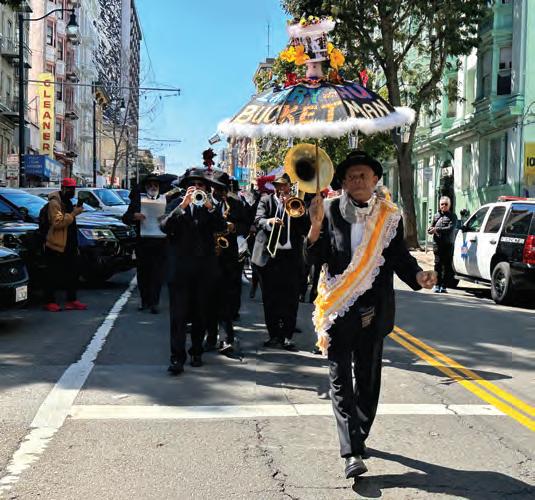
“Street musicians try to help one another, and there’s such a beauty of meeting all these people that do the same thing you do, but in their own way, here in San Francisco,” Wilson says passionately. “And this city is unique in that way because it is so varied.”
Wilson starts sharing the microphone with friends and other musicians who want to say a few words about Hunt and remember episodes of his life.
Hunt became known globally after his appearance in the 2006 Will Smith movie “The Pursuit Of Happyness,” shot in San Francisco. Tourists would recognize him after watching the film. “I was blessed. But you have to be in the right place at the right time”, he said during his speech at TEDxSoMa talk, in 2012.
During that talk, he also mentioned his dedication to music, the highs and lows of his life and his passion and optimism. “I have been on the streets twice, I have been in jail twice because of this [for playing music on the street]. My music is freedom of speech,
let me do what I love to do. If you don’t like it, go somewhere else. You put a smile on your face, see another day, cause you don’t know when you might not see another day.” His smile never abandoned his face during the talk, however, tears appeared in his eyes more than once. “I’m about to cry here,” he admitted at one point during his speech.
Hunt’s presence in San Francisco was always controversial; there were those who loved him and those who complained about the noise. One of his lowest moments, as he told later the San Francisco Chronicle, was when his real dream set (not buckets) was swiped by a city crew before the Super Bowl in 2016.
Another extraordinary thing happened in Hunt’s life. In 2013, a tourist was impressed by his charisma and talent. The man happened to be Alain Tasma, from the European packaging Company HK Plastics. The following year, Hunt flew to Germany for an all-expenses-paid trip with Tasma and appeared in an Intel commercial. He also had the opportunity to perform several times in front of around 500 people. “People treated me like a king over there,” the Bucket Man said in an interview for CBS Bay Area, after returning to San Francisco.
A man approaches the crowd timidly, hesitates, and then asks for the microphone. He says he arrived in the city 11 years ago, with his little kid and the mother of the child. He was poor, homeless and mad at life. One day he happened to be around Hunt playing his buckets. Hunt noticed his bad mood and asked him why he was so mad. Perhaps feeling a little ashamed at that moment, he answered, “I don’t know. I couldn’t think of an answer,” he recalls. “He asked me to dance, and I said, ‘I ain’t in the mood for dancing.’ But guess what, my child is there, dancing to his music now, he’s happy.” He remembers that moment vividly, as a warm welcome to the city, as a sort of hope. “I’m not homeless anymore and today I feel broke inside for Hunt’s loss.”
The microphone gets passed to Brian Compton, who’s playing today with other musicians of the New Funk Generation. He is the one who brought Hunt to the city 25 years ago. Hunt, in fact, used to play the drums in the East Bay, entertaining the students
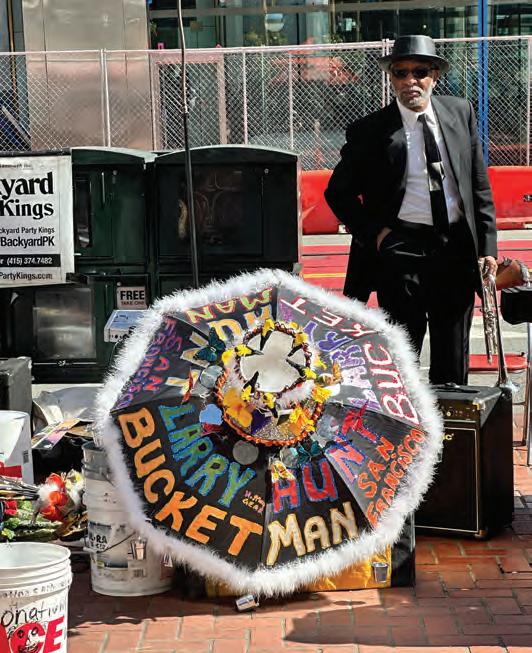
at the UC Berkeley campus in the late ’90s. Back then, Compton, who was just beginning his career, used to hang out there a lot. One day he decided to take his car and go play with this talented drummer. They became close friends. The students loved their shows, so the two friends started to play at clubs and fraternity parties in Berkeley. “We were a big hit there. Larry didn’t want to come to the city at first, so I had to convince him. He used to say there were too many crazy people in San Francisco. I told him, well, then it’s perfect for you,” Compton says with a laugh.
When Compton talks about Hunt, he looks mostly at one big picture of him standing in front of the cable car turnaround, instead of at the people who are gathered. It’s a hard and emotional day for him in particular. “Larry, the drummer,” Compton emphasizes. “Larry The Bucket Man, also, yeah, but that happened later,” he says. Hunt was a talented professional self-taught musician more than anything else.
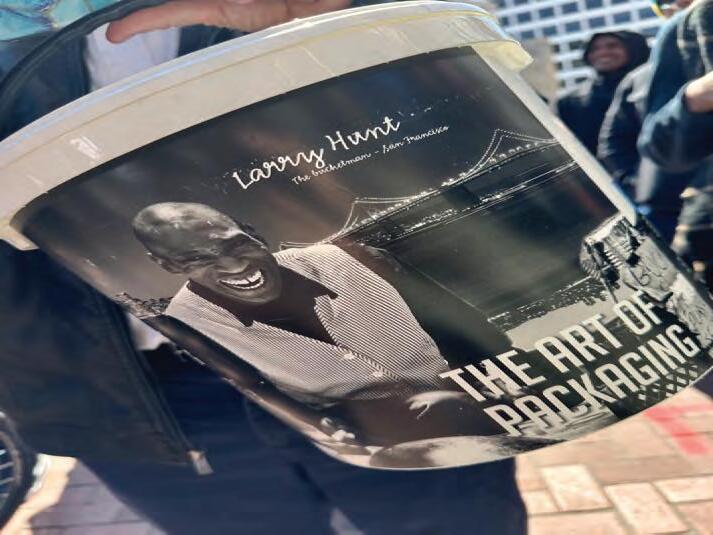
Compton’s career is another remarkable one. Originally from Nebraska, the self-taught bassist started to play music professionally after returning from the army. He and one of his friends were on the radio and started to have a little fame. “This guy in Hollywood took our song, We like the girls, so we had to sue him in court and we won. We were famous before going down there with everybody inside the industry, we were the troublemakers of San Francisco. After that, I decided to stay independent”.
“How I started on the street was because I used to park my car here downtown, and one day I was there with my guitar player. We were kind of playing randomly, and someone dropped money from a room real high, and yelled, ‘You guys should go play at Powell!’ And I said, well, let’s go.”
Street performing is still an important component of Compton’s artistic career, highlighted by connections and collaborations with musicians including George Clinton and Jimi Hendrix. He still plays close to the cable car stop with his friends on the weekends, just for fun. “This way you give people a chance to talk to musicians. If you are in a club or at a concert maybe they can’t do that,” Compton says. “Of course, before people had cell phones, the response was different. If they liked the music, they could absorb it better, but now that everybody got their own entertainment, changed the dynamic a lot. And I think a lot of street musicians prefer those days, ‘cause you got huge crowds back then; live music was something worth stopping for.”
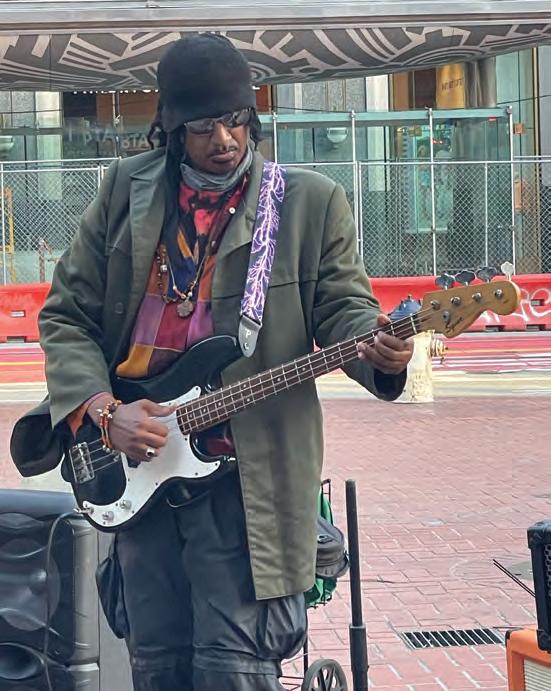
Today, Compton has his own label. He’s working on a project and travels to Japan often to perform.“Larry was the closest friend that anybody could ever be with me, musically,” he says. “We could read each other’s minds, ’cause we played together for so long. We could have done an entire show in the dark, with no light, and I could go from song to song and he would be there with me. Developing a connection like that as a musician, it’s something special that doesn’t even happen to everybody. It’s something that won’t ever come back.”
As the performances and speeches end, some of Hunt’s friends keep playing on the buckets that belonged to him. Gradually, the parade starts fading. Tourists walk away. Slowly, the Tenderloin life takes over its streets. The voices of the ones who are staying until the very end get absorbed into the traffic.
To register for courses go to www.ccsfjournalism.com
For more information call (415) 517–4426 or email jagonzal@ccsf.edu
Jour 21: News Writing and Reporting
72990 001 Lec. T R 9:40 – 10:55 a.m.
3.0 units
Ocean BNGL 615 Gonzales
Techniques of newspaper reporting, developing and writing a news story, training in information gathering and interviewing sources.
PREREQ: ENGL 93 or ENGL 95 or ENGL 88 or ENGL 88A or placement in ENGL 96 or ENGL 88B
Jour 22: Feature Writing
72991 501 Lec. T 6:10 – 9:00 p.m.
3.0 units
Mission Room 217 Mullaney
Fundamentals in feature writing for magazines and newspapers with special emphasis on profile and interpretive news features. Practical experience in interview and in-depth research techniques. Training in how to write a feature story for publication.
PREREQ: ENGL 93 or ENGL 95 or ENGL 88 or ENGL 88A or placement in ENGL 96 or ENGL 88B
Jour 24: Newspaper Laboratory (News Production I)
72992 001 L/L M 12:10 – 2:00 p.m.
W F 12:10 – 1:25 p.m.
3.0 units
Ocean BNGL 615 Gonzales
Beginning newspaper laboratory course focused on the publication of the college newspaper The Guardsman. Provides a practical understanding of the various elements involved in producing a newspaper.
ADVISE: JOUR 21. CSU
An introduction to the process of creating a magazine publication. Students work as part of a staff of writers and photographers focusing on writing and photographing feature stories suitable for publication in Etc. Magazine.
ADVISE: JOUR 21 OR JOUR 22 OR JOUR 37
An intermediate exploration into the process of creating a magazine publication. Students work as editors focusing on editing content suitable for publication in the campus magazine. They participate in the editorial and production process and develop the skills required for publishing Etc. Magazine.
ADVISE: JOUR 29A
Jour 29C: Advanced Magazine
72995 551
– 6:00 p.m.
6:10 – 9:00 p.m.
An advanced exploration into the process of creating a magazine publication. Students work in management positions focusing on leading a staff in producing content suitable for publication in the campus magazine. They facilitate the editorial and production process and develope the skills required to manage the publication of Etc. Magazine.
ADVISE: JOUR 29B
Jour 31: Internship Experience
1.0 – 2.0 units
72331 W01 Wrk Exp HOURS ARR Ocean BNGL 615 Gonzales
72996 W02 Wrk Exp HOURS ARR Ocean BNGL 615 Gonzales
Supervised on-campus or off-campus employment in a branch of journalism or a closely allied field.
ADVISE: JOUR 24, REpEAt: MAxIMUM CREDIt: 4 UnItS
Jour 37: Intro to Photojournalism
3.0 units
72997 551 Lec. W 6:10 - 9:00 p.m. Mission Mission Rm 217 Lifland
Emphasizes concepts of photojournalism, such as news and feature photography. Assignments will involve photographing people and visual storytelling at a level appropriate for publication, such as in campus publications. Access to Single Lens Reflex (SLR) digital or film camera required.
ADVISE: pHOt 51 OR DEMOnStRAtIOn Of EqUIVAlEnt knOwlEDgE. CSU